#mary or elizabeth being included in the third succession act .
Explore tagged Tumblr posts
Text


THE KING'S SISTERS
Margaret and Mary, Princesses of England, were daughters of Henry VII, King of England, and Elizabeth of York, Queen of England, making them the sisters of Arthur Prince of Wales and Henry VIII, King of England. Margaret became the Queen Consort of Scotland by her first marriage to James IV of Scotland, becoming Dowager Queen of Scotland after his death and at times Queen Regent of Scotland on behalf of their son James V, King of Scotland their only child to reach adulthood. On the occasion of her second marriage to Archibald Douglas, Earl of Angus she became the Countess of Angus, they had one child Margaret Douglas who grew up in the court of her brother, Margaret's marriage to Angus ended in divorce which Margaret instigated and successfully obtained at the astonishment of courts abroad including her own brothers. By her third marriage to Henry Stewart, Lord Methven she became Lady Methven no issue came of this union. Through her son, she became the grandmother of Mary I, Queen of Scotland commonly known as Mary, Queen of Scots who was later executed by her niece Elizabeth I of England. Through her daughter, she was the grandmother of Henry Stuart, Lord Darnley and Charles Stuart, Earl of Lennox. She was the great-grandmother twice over of James VI of Scotland and I of England making her the ancestress of all monarchs of England and then Great Britain. Mary became the Queen Consort of France by her first marriage to Louis XII of France, their marriage only lasted two months and three weeks (shorter than any of her brothers' marriages) with the sudden death of her husband, she then became Dowager Queen of France no issue came from this union. Her second marriage was to Charles Brandon, Duke of Suffolk making her the Duchess of Suffolk, their marriage caused quite a stir as Henry wanted to arrange another marriage of alliance for her and Henry's court did not want to grant more power to her husband. They later married a second time in the presence of her brother once welcomed back in her brother's court. They were married for eighteen years and she often took her husband's side on major issues of Henry's reign including being outspoken against his want and later marriage to Anne Boleyn, as well as Anne's character and actions. Her marriage to Charles produced four children with two daughters reaching adulthood Frances and Eleanor. Per the Act of Succession 1536 (three years after her death), her heirs took precedence over her elder sisters and were next in line to the English throne after her brothers. Through Frances Mary was the grandmother of Jane Grey, Queen Regnant of England who was made the heir of Edward VI over his sisters, Jane was later executed by Mary's niece Mary I of England. Mary's other Grey granddaughters Catherine and Mary also were points of contention during Elizabeth I's reign.
[As portrayed by Georgie Henley and Sai Bennett in Starz The Spanish Princess]
#the spanish princess#thespanishprincessedit#perioddramaedit#georgie henley#sai bennett#margaret tudor#mary rose tudor#mary tudor#my edits
31 notes
·
View notes
Note
I've been wondering this for awhile, because different secondary sources give various takes on the Downfall of Anne Boleyn, but how big of a role did the Seymours (Jane and her brothers) in particular play in the downfall and judicial murder of Anne Boleyn?
I hated how Becoming Elizabeth white-washed Edward Seymour's character by portraying him as being super nice to Elizabeth when I'm 100% sure that wasn't the case in real life. He didn't defend her when the Thomas Seymour scandal broke out, didn't tell her she looked like her dad, and certainly did not apologize to her for his brother's behavior. Somerset kept her away from King Edward and refused to let her come to court when she was accused to let her speak her piece. Wasn't he also the one who refused to give Elizabeth the lands/money Henry VIII left for her in his will? Thomas abused the Princess no question about it.
The Seymours helped cause Anne's death and then abused her daughter it seems. If they were behind her downfall it makes sense that they wouldn't care about her daughter either.
Well, given you've already mentioned secondary sources, I'm assuming you're not looking for reccomendations for material on this subject, and are just asking for my opinion? I might post some excerpts later regardless in some reblog or edit of this ask, if you're interested.
I'm not too familiar with the sources on Edward VI's reign but that does sound about right? Although I'm not positive there was much improvement when Edward Seymour was disempowered and eventually executed and John Dudley took up the helm, from what I remember that's true. For more on this, I would rec From Heads of Household to Heads of State by Jeri L. Mcintosh and Word of a Prince by Maria Perry.
Yeah, I don't...even want to get into BE discourse too much (I assume the invention of their relationship shifting from begrudging antipathy to admiration and eventual apology was due to AR's sympathy for him, but fans of the show were mad he apologized to Elizabeth and not Mary, for...what? What did they want, exactly? Had he not apologized to her in the canon of the show he would have died a CSA apologist). Most of it just seemed absurd to me. For whatever reason that man seems to have had some appeal to AR during her research process, and I simply cannot fathom why. To me, he is just flop (as ruthless as Cromwell but without his genius or political acumen, of moderate intelligence but poor character, I don't think you can even make the argument that well, even if ineffectual and 'of small power' by 1538, as per one contemporary, at least he withstood every shift and endured, that would be more applicable to a figure such as William Paulet).
But, circling back to the first question:
How big of a role did the Seymours (Jane and her brothers) in particular play in the downfall and judicial murder of Anne Boleyn?
An interesting one, because they're part of this rather large faction at the time, as Chapuys reports. I don't necessarily get the impression they were actually leading said faction, however...those with the most weight to pull number as Lord Montague, Nicholas Carew, at times Francis Bryan, the Marquis and Marchioness of Exeter. What's particularly interesting to note is that Chapuys specifically alleges that these players are constantly giving Jane advice on how and in what manner to speak with Henry VIII. Often this report is stretched to farce (some authors almost writing about this in ways that veer on anachronism, suggestions of Jane almost being fed line for line by earpiece), but assuming even moderate exaggeration of Chapuys' part, what I find compelling is what this means, which is that Jane doesn't really know Henry. As in, she has some sense of him, but she's reliant on the advice of those who have known him much longer.
Why I find that compelling is that it implies the Seymours have always sort of been on the outskirts, never within Henry's inner circle up to this point, which makes sense once the evidence is considered (Jane has probably been serving the new Queen since 1534 at latest, her appearance on gift rolls notwithstanding, but doesn't show up as her intimate in the way of Margaret Douglas, Mary Howard, etc). Her 'brothers' alone is interesting, isn't it? Contemporary report at this time doesn't even place Thomas there in the ramp-up to the coup, it might even be that he's often placed there in fiction because as we recreate these scenes on screen and stage, we read things backwards. We do know that Edward is there, and presumably he might have even been at court for some time, we know he's present at Anne Boleyn's coronation feast as server to Cranmer, we know he's the Duke of Richmond's Master of the Horse. But there's no mention of Thomas Seymour in all this until he's given title once his sister becomes Queen.
So, Edward's involvement, by contemporary report, is that he's basically in attendance at these meetings of Boleyn opponents, he's promoted to the Privy Chamber in March 1536 (not, however, the Privy Council until halfway through the next year, which is interesting...basically, he's not significantly promoted to that place of trust and influence until Jane's been Queen for an entire year, which is instructive insofar as it could mean one of two things: one, Jane's lack of influence and power as Queen, or two, that she doesn't care about the promotion of her brothers enough to push on the matter), he's chaperoning meetings between Jane and Henry alongside his wife in the quarters Cromwell has granted him which connect to Henry's own, and he's present at the failed Imperial detente between Cromwell, Chapuys, and Henry VIII in April 1536.
Circling back to how Jane requiring such intensive counsel to speak with Henry, on what to say and how to say it, on how to approach him...every point this faction wants her to press with Henry is rebuffed by him. There is no honeymoon period for Jane, truly. If she can't convince him to reinstate his eldest daughter in the succession, would she have been able to convince him to repudiate his wife? It's doubtful, although I'm sure she encouraged this, it's unlikely her encouragement was what pushed him over the brink, as it were.
Moreover, if we go beyond Chapuys, according to contemporary reports Jane was countermanded, sometimes quite publically, on pretty much every political move she attempted (once, five times in a row on the same matter, and another reports Henry as saying he had already 'often' told her not to meddle in his affairs, and this as early as five months into their marriage, and Jane as Queen). This is instructive insofar how much they were leading this faction, versus other members of the faction leading them. Assuming she wasn't masochistic, Jane must have repeatedly been promised and told by those that 'knew Henry best' (almost all of whom, absent Bryan, are going to end up on the scaffold in two years' time) that her influence was going to equal or even surpass her predecessors' upon Henry, and that she just had to bide her time.
So, was there a Seymour 'family firm' comparable to some others, as far as the Boleyn coup? Beyond Jane & Edward, there's not much evidence for one (certainly they were united in grabbing the spoils afterwards, Henry Seymour grabbed a vacant position by one of the accused and condemned men, Edward a viscounship to equal George Boleyn's, not to mention the riches and properties of the Dissolution both Jane and Edward enjoyed, etc). Thomas is absent, as are their parents, and Elizabeth Seymour seems to have even possibly been a Boleyn supporter by dint of her husband. Jane's maternal cousin is on the jury which condemns her predecessor, but beyond that....
Circling towards your last:
The Seymours helped cause Anne's death and then abused her daughter it seems. If they were behind her downfall it makes sense that they wouldn't care about her daughter either.
Eh, I don't think it's fair to term any of them, save Thomas Seymour later on, as 'abusive' towards Elizabeth. What's more certain is that they wouldn't have wanted her to develop any sort of base of power and support. It is interesting, though, as far as memory serves, that it's after Edward Seymour's power was stripped that Elizabeth was making such public appearances of honour at her brother's court. An interesting aspect of any counterfactual of Jane's survival, Jane being the last Tudor queen (consort) of Henry VIII, would be how the relationship between Edward VI&Elizabeth might then manifest, the Seymours would not have faded into obscurity as they did for much of Henry's reign, and it's difficult to imagine that they wouldn't have been wary of the two of them developing any sort of rapport. But, they did, and it was Henry that directed the education and environment that made this possible.
#heather123fan-blog#like i don't think the seymours were happy about edward and elizabeth being in the same household. or about frankly either#mary or elizabeth being included in the third succession act .#but them's the breaks.
12 notes
·
View notes
Note
Hi! I have loved Toho Elisabeth since May, and I want to find other musicals they’ve adapted and done but I have no idea where to find them, aside from a version of Phantom I found on Bilibili. Any help would be MUCH appreciated!
Hi!
So, first of all, my apologies for the length of time to reply -- I've been busy dealing with professional things the whole month and can only now be a human being. In relation to that...for the last three or so years, I haven't been able to follow Toho musicals like I wish I could. It's a shame, but. Well. Grad student. (As well as various developments in terms of my personal life and Toho that have made me a little less likely to follow it.)
I'll take this in three parts -- First of all, the adaptations I personally recommend, second, how to keep up to date on announcements (which I'm woefully behind on, do as I say, not as I do), and third, how to get ahold of them once you've found the musical of your dreams.
(Some) Recommendations
Romeo and Juliet (ミュージカル 「ロミオとジュリエット」)
The myth, the legend. One of the most legendary French original musicals, translated to Japanese for the purposes of the wildly successful Takarazuka production (which has had like. A *ton* of productions. I'm not inclined to do the research on how many, because this is the Quick and Dirty Guide, not the research paper, but there have been a Lot) and then totally reinterpreted for the Toho stage, including staging it in a post-apocalyptic setting and updating and expanding the libretto to fit that setting. (#1 way to piss off a Toho Romeo and Juliet fan? Say that it's just like the Zuka.) I personally recommend the 2019 production, specifically Black Cast with Furukawa Yuta, but you can form your own preferences.
Lady Bess (ミュージカル「レディ・ベス」)
If you came for Kunze and Levay, there's nothing better than...MORE Kunze and Levay. This was my very first Toho musical, I got the DVD back in....2018, God, that was five years ago. ANYWAY. It tells the story of a Young Elizabeth I of England and her struggle to survive under her sister's rule while contending with her mother's complex legacy while embarking on a youthful romance with the spirited poet, Robin Blake. While I do have some issues with the libretto, the music is strong and the production is gorgeous. If you can only get one, get the Star Cast with Aya Hirano and Kazuki Kato.
1789, Les Amants de La Bastille (ミュージカル 「1789 - バスティーユの恋人たち」)
If you know me, this musical doesn't need an introduction. It's changed my life. The Toho production in particular. It's quite bittersweet from where I'm standing now, for various reasons, including the tragic death of Sayaka Kanda, who was the lead actress for one of the casts, which...God, we're almost approaching the anniversary...but the fact remains that it was a gorgeous production, the music is gorgeous, and, plot-wise, it probably did the best job of exploring the characters and the nuances of the plot of any of the productions, including the French, and it perfectly suited the darker style usually associated with Toho musicals. I love both casts and recommend them, but of the two, I personally recommend the d'Espoir cast, which had Teppei Koike and Sayaka Kanda, not just out of pity, but because they were were both exceptional in the roles.)
Marie Antoinette (ミュージカル 「マリー・アントワネット」)
While I would say that Lady Bess introduced me to Toho and 1789 cemented my love for it, Marie Antoinette...defines it for me. It's probably my favorite Toho musical of all time. It would require a long, long rant to discuss everything I love about it, but to put it simply: It's a gorgeous production, you got some of the best actors currently working on the Japanese stage together to give some of the best acting of their careers, and the music is great. The dynamics between the various characters -- Margrid and Antoinette, Margrid and Orléans, Orléans and Antoinette, Antoinette and Fersen, Antoinette and Louis -- are some of my favorite in any musical I've seen, not just limited to Toho musicals, and the little bit of sexism that usually seems to follow Kunze and Levay's stuff...I don't want to say it's GONE, but I think that the fact that the female characters behave like people -- sometimes flawed people -- bumps it up a couple of notches, so if you like Elisabeth and you like its style...it's not a guarantee, since MA doesn't lean on the gothic tradition as much as Elisabeth, but you will PROBABLY like it. I personally recommend the A Cast with Sonim, Furukawa Yuta, and Rena Sasamoto.
This is, imo, a good starter pack -- there are other Toho musicals out there, but these are the ones that I recommend to capture some of the range of what Toho can do as a company and to introduce you to some of the best of the best on stage.
Now, Part 2:
2. R's Quick and Dirty Guide to Toho Musicals and How To Get Into Them (if you need links, let me know):
First of all: Follow the official Toho Channel on Youtube + Twitter. This is your best guide for keeping up to date on which projects they're working on. Also follow Umeda Arts while you're at it, and since there's a not-insignificant overlap between Horipro's business and Toho's, follow THEM as well. This will also keep you up to date on things like DVD + BluRay releases, since they tend to announce them on Twitter + Youtube.
Follow some of the stars on Instagram! Japanese celebrities tend to be very much into Instagram (okay, so are American celebrities) -- this is your best bet at following which projects they're working on. Since you mentioned Elisabeth, for example, Furukawa Yuta maintains an active Instagram presence *and* is an immensely bankable star. Likewise for Manaki Reika, Hanafusa Mari, etc., and they often will take pictures of musicals they're attending, or stars they're working with, so you can hopefully get a web of stars constantly posting updates about new projects.
And for the grand finale....
3. Getting ahold of them.
I recommend using a proxy if you're not in Japan. Do NOT, for the LOVE OF GOD, go for Ebay prices -- with how low the yen currently is, just about anything you pick up on Ebay is either going to be highway robbery or something you could get for the same price using a proxy. I use two services -- Buyee for when I want to do a broad search of everything on the Japanese market for something I can buy myself, MyFavoriteThingsJapan for when the thing that I want requires a little bit more...negotiation. (I am very aware that the way I just phrased that makes it sound like I have a personal hitman I use to get ahold of Japanese theatre merch.) (Not yet.) Sometimes, you will find items, DVDs, BluRays, CDs, etc. that Buyee doesn't cover. And, in those instances, if you don't speak Japanese, it's to your benefit to have someone who can negotiate on your behalf with the buyer. It's a little bit more costly, but worth it. Japanese theatre is frustrating to be in, because, unlike, say, VBW for German language musicals, the Japanese industry has never seen the need to overly cater to its international fans (though this has been improving with, say, Takarazuka.) Western...or even non-Japanese Toho fans are an exception, not a rule. So, we have to be a little bit more creative. That being SAID, there are so many proxy services available now VS even five years ago, and the price of the yen is still so low compared to where it was, that it has never been easier to buy these things. (And, in some ways, it's easier than, say, getting ahold of specialized French merchandise. Or, God help us all, Hungarian.)
You'll notice I'm not making any suggestions of websites to find these things -- due to how oppressively underpaid Japanese theatre stars often are (with a couple of exceptions at the very top of the industry), there is, traditionally, a very strong taboo around sharing websites that you can get ahold of these things for free. Japanese theatre fans are often stereotyped as being incredibly parasocial with their stars of choice -- there's absolutely truth to this and there are a number of cultural factors why this is the case, even among western fans (though, frankly, as someone who survived the Tveitpocalypse, I wonder whether we really want to argue that that's unique to Japanese or Korean theatre), but at least part of it is that, frankly, the fans often protect the stars better than their own companies do (the Japanese theatre industry is...an industry. Mix some of the worst of Japanese work culture with already-crushing expectations of the theatre industry and BANG you have the Japanese musical theatre industry in a nutshell, at least among the major companies). There's a feeling of protectiveness, in other words. My relationship with that taboo is a long and complicated one that's gone through many phases over the years -- at the moment, I'm, frankly, too tired to actively scold anyone for it, especially given how much hypocrisy often surrounds that taboo, but I'm still not willing to publicly share that information or to share my own personal links. You know one that you can find material on -- I also know that you can find things on archive.org and VK. I won't point you to them directly, but they exist, even if there are, in general, fewer Toho musicals posted to both than, say, Takarazuka, and I know that @emptymasks has compiled a list of both Takarazuka and Toho Elisabeth productions here. Beyond that, I can also stream any of the aforementioned musicals, so long as you give me a little time to plan since my schedule is really, thoroughly, not what it used to be.
8 notes
·
View notes
Text
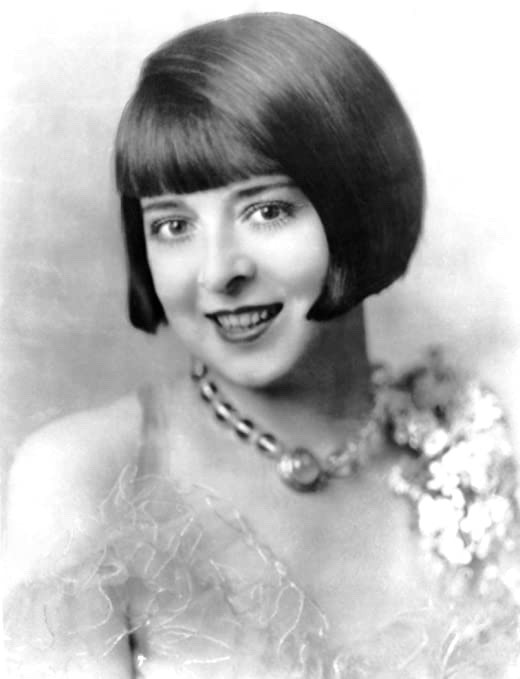
Colleen Moore (born Kathleen Morrison; August 19, 1899 – January 25, 1988) was an American film actress who began her career during the silent film era. Moore became one of the most fashionable (and highly-paid) stars of the era and helped popularize the bobbed haircut.
A huge star in her day, approximately half of Moore's films are now considered lost, including her first talking picture from 1929. What was perhaps her most celebrated film, Flaming Youth (1923), is now mostly lost as well, with only one reel surviving.
Moore took a brief hiatus from acting between 1929 and 1933, just as sound was being added to motion pictures. After the hiatus, her four sound pictures released in 1933 and 1934 were not financial successes. Moore then retired permanently from screen acting.
After her film career, Moore maintained her wealth through astute investments, becoming a partner of Merrill Lynch. She later wrote a "how-to" book about investing in the stock market.
Moore also nurtured a passion for dollhouses throughout her life and helped design and curate The Colleen Moore Dollhouse, which has been a featured exhibit at the Museum of Science and Industry in Chicago, Illinois since the early 1950s. The dollhouse, measuring 9 square feet (0.84 m2), was estimated in 1985 to be worth of $7 million, and it is seen by 1.5 million people annually.
Moore was born Kathleen Morrison on August 19, 1899, (according to the bulk of the official records;[4] the date which she insisted was correct in her autobiography, Silent Star, was 1902)[5] in Port Huron, Michigan,[6] Moore was the eldest child of Charles R. and Agnes Kelly Morrison. The family remained in Port Huron during the early years of Moore's life, at first living with her grandmother Mary Kelly (often spelled Kelley) and then with at least one of Moore's aunts.
By 1905, the family moved to Hillsdale, Michigan, where they remained for over two years. They relocated to Atlanta, Georgia, by 1908. They are listed at three different addresses during their stay in Atlanta (From the Atlanta-Fulton Public Library city directories): 301 Capitol Avenue −1908; 41 Linden Avenue – 1909; 240 N. Jackson Street – 1910. They then lived briefly — probably less than a year — in Warren, Pennsylvania, and by 1911, they had settled in Tampa, Florida.
At age 15 she was taking her first step in Hollywood. Her uncle arranged a screen test with director D.W. Griffith. She wanted to be a second Lillian Gish but instead, she found herself playing heroines in Westerns with stars such as Tom Mix.
Two of Moore's great passions were dolls and movies; each would play a great role in her later life. She and her brother began their own stock company, reputedly performing on a stage created from a piano packing crate. Her aunts, who doted on her, indulged her other great passion and often bought her miniature furniture on their many trips, with which she furnished the first of a succession of dollhouses. Moore's family summered in Chicago, where Moore enjoyed baseball and the company of her Aunt Lib (Elizabeth, who changed her name to "Liberty", Lib for short) and Lib's husband Walter Howey. Howey was the managing editor of the Chicago Examiner and an important newspaper editor in the publishing empire of William Randolph Hearst, and was the inspiration for Walter Burns, the fictional Chicago newspaper editor in the play and the film, The Front Page.
Early years
Essanay Studios was within walking distance of the Northwestern L, which ran right past the Howey residence. (They occupied at least two residences between 1910 and 1916: 4161 Sheridan and 4942 Sheridan.) In interviews later in her silent film career, Moore claimed she had appeared in the background of several Essanay films, usually as a face in a crowd. One story has it she had gotten into the Essanay studios and waited in line to be an extra with Helen Ferguson: in an interview with Kevin Brownlow many years later, Ferguson told a story that substantially confirmed many details of the claim, though it is not certain if she was referring to Moore's stints as a background extra (if she really was one) or to her film test there prior to her departure for Hollywood in November 1917. Film producer D.W. Griffith was in debt to Howey, who had helped him to get both The Birth of a Nation and Intolerance through the Chicago censorship board.
"I was being sent to Hollywood - not because anybody out there thought I was any good, but simply to pay off a favor".
The contract to Griffith's Triangle-Fine Arts was conditional on passing a film test to ensure that her heterochromia (she had one brown eye, one blue eye) would not be a distraction in close-up shots. Her eyes passed the test, so she left for Hollywood with her grandmother and her mother as chaperones. Moore made her first credited film appearance in 1917 in The Bad Boy for Triangle Fine Arts, and for the next few years appeared in small, supporting roles gradually attracting the attention of the public.
The Bad Boy was released on February 18, and featured Robert Harron, Richard Cummings, Josephine Crowell, and Mildred Harris (who would later become Charles Chaplin's first wife). Two months later, it was followed by An Old-Fashioned Young Man, again with Robert Harron. Moore’s third film was Hands Up! filmed in part in the vicinity of the Seven Oaks (a popular location for productions that required dramatic vistas). This was her first true western. The film’s scenario was written by Wilfred Lucas from a story by Al Jennings, the famous outlaw who had been freed from jail by presidential pardon by Theodore Roosevelt in 1907. Monte Blue was in the cast and noticed Moore could not mount her horse, though horseback riding was required for the part (during casting for the part she neglected to mention she did not know how to ride). Blue gave her a quick lesson essentially consisting of how to mount the horse and how to hold on.
On May 3, 1917, the Chicago Daily Tribune said: "Colleen Moore contributes some remarkable bits of acting. She is very sweet as she goes trustingly to her bandit hero, and, O, so pitiful, when finally realizing the character of the man, she goes into a hysteria of terror, and, shrieking 'Daddy, Daddy, Daddy!' beats futilely on a bolted door, a panic-stricken little human animal, who had not known before that there was aught but kindness in the world." About the time her first six-month contract was extended an additional six months, she requested and received a five weeks release to do a film for Universal's Bluebird division, released under the name The Savage. This was her fourth film, and she was only needed for two weeks. Upon her return to the Fine Arts lot, she spent several weeks trying to get her to pay for the three weeks she had been available for work for Triangle (finally getting her pay in December of that year).
Soon after, the Triangle Company went bust, and while her contract was honored, she found herself scrambling to find her next job. With a reel of her performance in Hands Up! under her arm, Colin Campbell arranged for her to get a contract with Selig Polyscope. She was very likely at work on A Hoosier Romance before The Savage was released in November. After A Hoosier Romance, she went to work on Little Orphant Annie. Both films were based upon poems by James Whitcomb Riley, and both proved to be very popular. It was her first real taste of popularity.
Little Orphant Annie was released in December. The Chicago Daily Tribune wrote of Moore, "She was a lovely and unspoiled child the last time I saw her. Let’s hope commendation hasn’t turned her head." Despite her good notices, her luck took a turn for the worse when Selig Polyscope went bust. Once again Moore found herself unemployed, but she had begun to make a name for herself by 1919. She had a series of films lined up. She went to Flagstaff, Arizona for location work on The Wilderness Trail, another western, this time with Tom Mix. Her mother went along as a chaperone. Moore wrote that while she had a crush on Mix, he only had eyes for her mother. The Wilderness Trail was a Fox Film Corporation production, and while it had started production earlier, it would not be released until after The Busher, which was released on May 18. The Busher was an H. Ince Productions-Famous Players-Lasky production; it was a baseball film wherein the hero was played by John Gilbert. The Wilderness Trail followed on July 6, another Fox film. A few weeks later, The Man in the Moonlight, a Universal Film Manufacturing Company film was released on July 28. The Egg Crate Wallop was a Famous Players-Lasky production released by Paramount Pictures on September 28.
The next stage of her career was with the Christie Film Company, a move she made when she decided she needed comic training. While with Christie, she made Her Bridal Nightmare, A Roman Scandal, and So Long Letty. At the same time as she was working on these films, she worked on The Devil's Claim with Sessue Hayakawa, in which she played a Persian woman, When Dawn Came, and His Nibs (1921) with Chic Sale. All the while, Marshall Neilan had been attempting to get Moore released from her contract so she could work for him. He was successful and made Dinty with Moore, releasing near the end of 1920, followed by When Dawn Came.
For all his efforts to win Moore away from Christie, it seems Neilan loaned Moore to other studios most of the time. He loaned her out to King Vidor for The Sky Pilot, released in May 1921, yet another Western. After working on The Sky Pilot on location in the snows of Truckee, she was off to Catalina Island for work on The Lotus Eater with John Barrymore. In October 1921, His Nibs was released, her only film to be released that year besides The Sky Pilot. In His Nibs, Moore actually appeared in a film within the film; the framing film was a comedy vehicle for Chic Sales. The film it framed was a spoof on films of the time. 1922 proved to be an eventful year for Moore as she was named a WAMPAS Baby Star during a "frolic" at the Ambassador Hotel which became an annual event, in recognition of her growing popularity.[13] In early 1922, Come On Over was released, made from a Rupert Hughes story and directed by Alfred E. Green. Hughes directed Moore himself in The Wallflower, released that same year. In addition, Neilan introduced her to John McCormick, a publicist who had had his eye on Moore ever since he had first seen her photograph. He had prodded Marshall into an introduction. The two hit it off, and before long they were engaged. By the end of that year, three more of her films were released: Forsaking All Others, The Ninety and Nine, and Broken Chains.
Look Your Best and The Nth Commandment were released in early 1923, followed by two Cosmopolitan Productions, The Nth Commandment and Through the Dark. By this time, Moore had publicly confirmed her engagement to McCormick, a fact that she had been coy about to the press previously. Before mid-year, she had signed a contract with First National Pictures, and her first two films were slated to be The Huntress and Flaming Youth. Slippy McGee came out in June, followed by Broken Hearts of Broadway.
Moore and John McCormick married while Flaming Youth was still in production, and just before the release of The Savage. When it was finally released in 1923, Flaming Youth, in which she starred opposite actor Milton Sills, was a hit. The controversial story put Moore in focus as a flapper, but after Clara Bow took the stage in Black Oxen in December, she gradually lost her momentum. In spring 1924 she made a good but unsuccessful effort to top Bow in The Perfect Flapper, and soon after she dismissed the whole flapper vogue; "No more flappers...people are tired of soda-pop love affairs." Decades later Moore stated Bow was her "chief rival."
Through the Dark, originally shot under the name Daughter of Mother McGinn, was released during the height of the Flaming Youth furor in January 1924. Three weeks later, Painted People was released. After that, she was to star in Counterfeit. The film went through a number of title changes before being released as Flirting with Love in August. In October, First National purchased the rights to Sally for Moore's next film. It would be a challenge, as Sally was a musical comedy. In December, First National purchased the rights to Desert Flower and in so doing had mapped out Moore's schedule for 1925: Sally would be filmed first, followed by The Desert Flower.
By the late 1920s, she had accomplished dramatic roles in films such as So Big, where Moore aged through a stretch of decades, and was also well received in light comedies such as Irene. An overseas tour was planned to coincide with the release of So Big in Europe, and Moore saw the tour as her first real opportunity to spend time with her husband, John McCormick. Both she and John McCormick were dedicated to their careers, and their hectic schedules had kept them from spending any quality time together. Moore wanted a family; it was one of her goals.
Plans for the trip were put in jeopardy when she injured her neck during the filming of The Desert Flower. Her injury forced the production to shut down while Moore spent six weeks in a body cast in bed. Once out of the cast, she completed the film and left for Europe on a triumphal tour. When she returned, she negotiated a new contract with First National. Her films had been great hits, so her terms were very generous. Her first film upon her return to the States was We Moderns, set in England with location work done in London during the tour. It was a comedy, essentially a retelling of Flaming Youth from an English perspective. This was followed by Irene (another musical in the style of the very popular Sally) and Ella Cinders, a straight comedy that featured a cameo appearance by comedian Harry Langdon. It Must Be Love was a romantic comedy with dramatic undertones, and it was followed by Twinkletoes, a dramatic film that featured Moore as a young dancer in London's Limehouse district during the previous century. Orchids and Ermine was released in 1927, filmed in part in New York, a thinly veiled Cinderella story.
In 1927, Moore split from her studio after her husband suddenly quit. It is rumored that John McCormick was about to be fired for his drinking and that she left as a means of leveraging her husband back into a position at First National. It worked, and McCormick found himself as Moore's sole producer. Moore's popularity allowed her productions to become very large and lavish. Lilac Time was one of the bigger productions of the era, a World War I drama. A million dollar film, it made back every penny spent within months. Prior to its release, Warner Bros. had taken control of First National and were less than interested in maintaining the terms of her contract until the numbers started to roll in for Lilac Time. The film was such a hit that Moore managed to retain generous terms in her next contract and her husband as her producer.
In 1928, inspired by her father and with help from her former set designer, a dollhouse was constructed by her father, which was 9 square feet with the tallest tower 12 feet high. The interior of The Colleen Moore Dollhouse, designed by Harold Grieve, features miniature bear skin rugs and detailed furniture and art. Moore's dollhouse has been a featured exhibit at the Museum of Science and Industry in Chicago, Illinois since October 30, 1949, where according to the museum, it is seen by 1.5 million people each year and would be worth $7 million. Moore continued working on it and contributing artifacts to it until her death.
This dollhouse was the eighth one Moore owned. The first dollhouse, she wrote in her autobiography Silent Star (1968), evolved from a cabinet that held her collection of miniature furniture. It was supposedly built from a cigar box. Kitty Lorgnette wrote in the Saturday, August 13, 1938 edition of The Evening News (Tampa) that the first dollhouse was purchased by Oraleze O'Brien (Mrs. Frank J. Knight) in 1916 when Moore (then Kathleen) left Tampa. Oraleze was too big for dollhouses, however, and she sold it again after her cat had kittens in it, and from there she lost track of it. The third house was possibly given to the daughter of Moore's good friend, author Adela Rogers St. Johns. The fourth survives and remains on display in the living room of a relative.
With the advent of talking pictures in 1929, Moore took a hiatus from acting. After divorcing McCormick in 1930, Moore married prominent New York-based stockbroker Albert Parker Scott in 1932. The couple lived at that time in a lavish home at 345 St. Pierre Road in Bel Air, where they hosted parties for and were supporters of the U.S. Olympic team, especially the yachting team, during the 1932 Summer Olympics held in Los Angeles.
In 1934, Moore, by then divorced from Albert Parker Scott, returned to work in Hollywood. She appeared in three films, none of which was successful, and Moore retired. Her last film was a version of The Scarlet Letter in 1934. She later married the widower Homer Hargrave and raised his children (she never had children of her own) from a previous marriage, with whom she maintained a lifelong close relationship. Throughout her life she also maintained close friendships with other colleagues from the silent film era, such as King Vidor and Mary Pickford.
In the 1960s, Moore formed a television production company with King Vidor with whom she had worked in the 1920s. She also published two books in the late 1960s, her autobiography Silent Star: Colleen Moore Talks About Her Hollywood (1968) and How Women Can Make Money in the Stock Market (1969). She also figures prominently alongside King Vidor in Sidney D. Kirkpatrick's book, A Cast of Killers, which recounts Vidor's attempt to make a film of and solve the murder of William Desmond Taylor. In that book, she is recalled as having been a successful real estate broker in Chicago and partner in the investment firm Merrill Lynch after her film career.
Many of Moore's films deteriorated, but not due to her own neglect, after she had sent them to be preserved at the Museum of Modern Art. Some time later, Warner Brothers asked for their nitrate materials to be returned to them. Moore's earlier First National films were also sent, since Warners later acquired First National. Upon their arrival, the custodian at MOMA, not seeing the films on the manifest, put them to one side and never went back to them. Many years later, Moore inquired about her collection and MOMA found the films languishing unprotected. When the films were examined, they had decomposed past the point of preservation. Heartbroken, she tried in vain to retrieve any prints she could from several sources without much success. In 1956, the material from WB and FN was sold to Associated Artists Productions, later to MGM/UA and then, Turner Entertainment.
At the height of her fame, Moore was earning $12,500 per week. She was an astute investor, and through her investments, remained wealthy for the rest of her life. In her later years she would frequently attend film festivals, and was a popular interview subject always willing to discuss her Hollywood career. She was a participant in the documentary series Hollywood (1980), providing her recollections of Hollywood's silent film era.
Moore was married four times. Her first marriage was to John McCormick of First National Studios. They married in 1923 and divorced in 1930. In 1932, Moore married stockbroker Albert P. Scott. This union ended in divorce in 1934. Moore's third marriage was to Homer Hargrave, whom she married in 1936; he provided funding for her dollhouse and she adopted his son, Homer Hargrave, Jr and his daughter, Judy Hargrave. They remained married until Hargrave's death in 1965. In 1982, Moore married her final husband, builder Paul Magenot. They were married until Moore's death in 1988.
On January 25, 1988, Moore died from cancer in Paso Robles, California, aged 88. For her contribution to the motion picture industry, Colleen Moore has a star on the Hollywood Walk of Fame at 1551 Vine Street.
F. Scott Fitzgerald wrote of her: "I was the spark that lit up Flaming Youth, Colleen Moore was the torch. What little things we are to have caused all that trouble."
#colleen moore#silent era#silent hollywood#silent movie stars#1910s movies#1920s hollywood#golden age of hollywood#classic movie stars#classic hollywood#1930s hollywood#flapper#roaring 20s
22 notes
·
View notes
Text
IS THERE A BABY IN THE HOUSE?
November 27, 1948

“Is There A Baby In The House?” (aka “There’s A Baby In The House”) is episode #18 of the radio series MY FAVORITE HUSBAND broadcast on November 27, 1948.
Synopsis ~ Liz goes over to meet the new neighbors and winds up minding a four-month old baby overnight.
Note: This episode was aired before the characters names were changed from Cugat to Cooper. It was also before Jell-O came aboard to sponsor the show and before the regular cast featured Bea Benadaret and Gale Gordon as the Atterburys.

“My Favorite Husband” was based on the novels Mr. and Mrs. Cugat, the Record of a Happy Marriage (1940) and Outside Eden (1945) by Isabel Scott Rorick, which had previously been adapted into the film Are Husbands Necessary? (1942). “My Favorite Husband” was first broadcast as a one-time special on July 5, 1948. Lucille Ball and Lee Bowman played the characters of Liz and George Cugat, and a positive response to this broadcast convinced CBS to launch “My Favorite Husband” as a series. Bowman was not available Richard Denning was cast as George. On January 7, 1949, confusion with bandleader Xavier Cugat prompted a name change to Cooper. On this same episode Jell-O became its sponsor. A total of 124 episodes of the program aired from July 23, 1948 through March 31, 1951. After about ten episodes had been written, writers Fox and Davenport departed and three new writers took over – Bob Carroll, Jr., Madelyn Pugh, and head writer/producer Jess Oppenheimer. In March 1949 Gale Gordon took over the existing role of George’s boss, Rudolph Atterbury, and Bea Benaderet was added as his wife, Iris. CBS brought “My Favorite Husband” to television in 1953, starring Joan Caulfield and Barry Nelson as Liz and George Cooper. The television version ran two-and-a-half seasons, from September 1953 through December 1955, running concurrently with “I Love Lucy.” It was produced live at CBS Television City for most of its run, until switching to film for a truncated third season filmed (ironically) at Desilu and recasting Liz Cooper with Vanessa Brown.
MAIN CAST

Lucille Ball (Liz Cugat) was born on August 6, 1911 in Jamestown, New York. She began her screen career in 1933 and was known in Hollywood as ‘Queen of the B’s’ due to her many appearances in ‘B’ movies. “My Favorite Husband” eventually led to the creation of “I Love Lucy,” a television situation comedy in which she co-starred with her real-life husband, Latin bandleader Desi Arnaz. The program was phenomenally successful, allowing the couple to purchase what was once RKO Studios, re-naming it Desilu. When the show ended in 1960 (in an hour-long format known as “The Lucy-Desi Comedy Hour”) so did Lucy and Desi’s marriage. In 1962, hoping to keep Desilu financially solvent, Lucy returned to the sitcom format with “The Lucy Show,” which lasted six seasons. She followed that with a similar sitcom “Here’s Lucy” co-starring with her real-life children, Lucie and Desi Jr., as well as Gale Gordon, who had joined the cast of “The Lucy Show” during season two. Before her death in 1989, Lucy made one more attempt at a sitcom with “Life With Lucy,” also with Gordon.
Richard Denning (George Cugat) was born Louis Albert Heindrich Denninger Jr., in Poughkeepsie, New York. When he was 18 months old, his family moved to Los Angeles. Plans called for him to take over his father’s garment manufacturing business, but he developed an interest in acting. Denning enlisted in the US Navy during World War II. He is best known for his roles in various science fiction and horror films of the 1950s. Although he teamed with Lucille Ball on radio in “My Favorite Husband,” the two never acted together on screen. While “I Love Lucy” was on the air, he was seen on another CBS TV series, “Mr. & Mrs. North.” From 1968 to 1980 he played the Governor on “Hawaii 5-0″, his final role. He died in 1998 at age 84.
Ruth Perrott (Katie, the Maid) was also later seen on “I Love Lucy.” She first played Mrs. Pomerantz, a member of the surprise investigating committee for the Society Matrons League in “Pioneer Women” (ILL S1;E25), as one of the member of the Wednesday Afternoon Fine Arts League in “Lucy and Ethel Buy the Same Dress” (ILL S3;E3), and also played a nurse when “Lucy Goes to the Hospital” (ILL S2;E16). She died in 1996 at the age of 96.
Bob LeMond (Announcer) also served as the announcer for the pilot episode of “I Love Lucy”. When the long-lost pilot was finally discovered in 1990, a few moments of the opening narration were damaged and lost, so LeMond – fifty years later – recreated the narration for the CBS special and subsequent DVD release.
GUEST CAST

John Hiestand (Cory Cartwright) served as the announcer for the radio show “Let George Do It” from 1946 to 1950. In 1955 he did an episode of “Our Miss Brooks” opposite Gale Gordon.

Frank Nelson (Mr. Brennan) was born on May 6, 1911 (three months before Lucille Ball) in Colorado Springs, Colorado. He started working as a radio announcer at the age of 15. He later appeared on such popular radio shows as “The Great Gildersleeve,” “Burns and Allen,” and “Fibber McGee & Molly”. Aside from Lucille Ball, Nelson is perhaps most associated with Jack Benny and was a fifteen-year regular on his radio and television programs. His trademark was playing clerks and other working stiffs, suddenly turning to Benny with a drawn out “Yeeeeeeeeees?” Nelson appeared in 11 episodes of “I Love Lucy”, including three as quiz master Freddy Fillmore, and two as Ralph Ramsey, plus appearance on “The Lucy-Desi Comedy Hour” - making him the only actor to play two different recurring roles on “I Love Lucy.” Nelson returned to the role of the frazzled Train Conductor for an episode of “The Lucy Show” in 1963. This marks his final appearance on a Lucille Ball sitcom.

Mary Lansing (New Neighbor, Little Stevie’s Mother) was best known for playing Martha Clark and ten other characters in Mayberry on “The Andy Griffith Show” and “Mayberry R.F.D.”, both filmed at Desilu. Lucy lovers might remember her as the voice of weepy Cynthia in “Over The Teacups”, the Broadway play that the Ricardos and Mertzes attend in “Ethel’s Birthday” (ILL S4;E9). She met Frank Nelson performing on radio. They married in 1933 and had two children. Lansing appeared with him frequently on the “Jack Benny Program” during the 1950s.
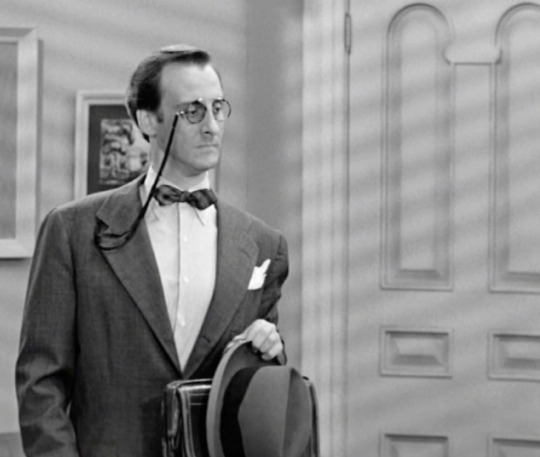
Hans Conried (Mr. Atterbury, George’s Boss) first co-starred with Lucille Ball in The Big Street (1942). He then appeared on “I Love Lucy” as used furniture man Dan Jenkins in “Redecorating” (ILL S2;E8) and later that same season as Percy Livermore in “Lucy Hires an English Tutor” (ILL S2;E13) – both in 1952. The following year he began an association with Disney by voicing Captain Hook in Peter Pan. On “The Lucy Show” he played Professor Gitterman in “Lucy’s Barbershop Quartet” (TLS S1;E19) and in “Lucy Plays Cleopatra” (TLS S2;E1). He was probably best known as Uncle Tonoose on “Make Room for Daddy” starring Danny Thomas, which was filmed on the Desilu lot. He joined Thomas on a season 6 episode of “Here’s Lucy” in 1973. He died in 1982 at age 64.
In a few months, the role of Mr. Atterbury will be assumed by Gale Gordon.
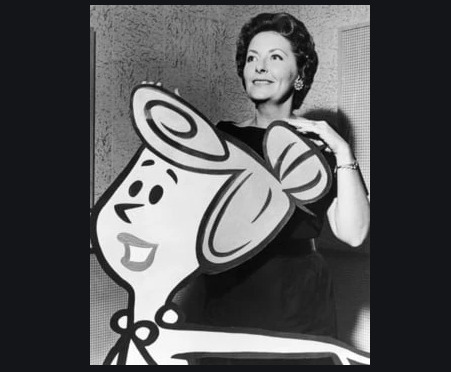
Jean Vander Pyl (Stevie the Baby) is best known as the voice of Wilma Flintstone for the Hanna-Barbera cartoon “The Flintstones.” Coincidentally, Wilma’s best friend was voiced by Bea Benadaret, who will later play Iris Atterbury, Liz’s best friend on “My Favorite Husband.” On radio she was heard on such programs as “The Halls of Ivy” (1950–52) and on “Father Knows Best” before it moved to TV. She died in 1999 at age 79.
Doing baby voices was something that Vander Pyl would also do on “The Flintstones” where she did the voice of her own daughter, Pebbles.
EPISODE
ANNOUNCER: “As we look in on the Cugats this morning something new has been added. There’s a moving van in front of the house next door, but of course the new neighbors don’t interest Liz Cugat in the least!”
Liz is peering through the front window at the goings on next door using George’s binoculars. George gets interested only when she sees fishing and hunting equipment being unloaded.
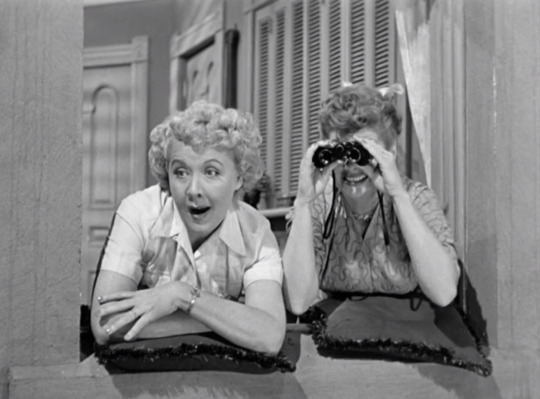
In “New Neighbors” (ILL S1;E21) in 1952, Lucy and Ethel watch new tenants the O’Briens move in using Ricky’s binoculars. Like Liz, Lucy mistakes a bug on the lens for the new neighbor! Unlike George, it is blonde, shapely Mrs. O’Brien who gets Ricky and Fred interested, not sporting equipment.
Cory Cartwright (John Hiestand) drops by for a rare early morning visit. He’s come by to tell George that he is to be the trustee of his mother’s club, who helps an orphan home with 130 children. George makes Liz promise not to go next door and bother the new neighbors while he is at work.
Liz and Katie spend two hours washing windows while spying on the movers. Liz says they moved in a lot of junk.
KATIE: “With women who know junk best, it’s Mrs. Cugat two to one!”

Katie is sarcastically paraphrasing a popular ad slogan of the 1930s and ‘40s for Lucky Strike Cigarettes: “With men who know tobacco best, it’s Luckies 2 to 1″.
Liz wildly figures that if she doesn’t go over and visit the new neighbor she may lonely, take to brooding, become moody and despondent and turn on the gas. Liz rushes off to save her life!
Liz visits the new neighbor (Mary Lansing), who compliments Liz on having two such industrious maids - the ones who spent the two hours cleaning the same window! Before Liz leaves, the woman asks her to babysit with her four month old son, Stevie (Jean Vander Pyl), while she runs an errand.
George comes home early while Liz is still watching the baby, so she tells Katie to take him into the den. George hears the baby crying and goes into the den to see for himself and demands to know who it belongs to.
LIZ: “You wouldn’t believe it’s mine, would you?” GEORGE: “No!” LIZ: “Princess Elizabeth’s?”

When Britain’s Queen Elizabeth II was still Princess Elizabeth, she gave birth to Prince Charles, who was born on November 14, 1948, two weeks before this broadcast. Princess Elizabeth became Queen upon the death of her father, George VI in February 1952. Lucy Ricardo performed for her in “Lucy Meets The Queen” (ILL S5;E15) in January 1956. Naturally, the monarch remained off camera.
Liz admits that the child belongs to their new neighbor. Just then the telephone rings and Liz leaves George with the baby to answer it. George tries to distract the child with his pocketwatch, which Stevie promptly breaks. Liz returns to report that Stevie’s mother is delayed and they have to watch the child overnight!
~END OF ACT ONE~
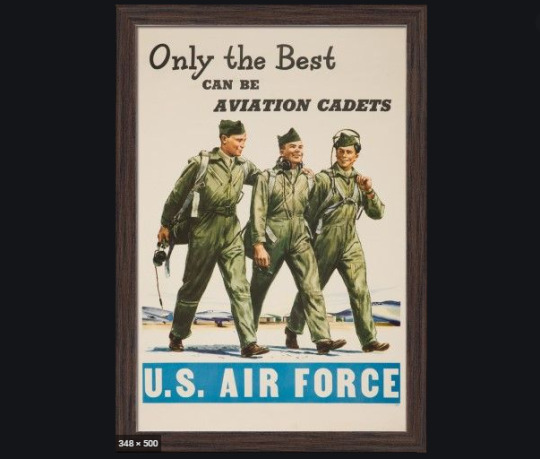
A patriotic public service announcement details how the US Air Force helped a Spanish town remove a precariously tottering statue from a high building.
ANNOUNCER: “And now, let’s go back to Liz and George Cugat and see how they are getting along with the baby.”
In the kitchen, Liz and George are trying to figure out how to feed the baby, not remembering the exact formula. They decide to feed him cereal, instead.
LIZ: “Now which kind do you think he’ll like best? Corn Flakes or Post Toasties? Here’s a good one: Grape-Nuts!”

Post Toasties was a breakfast cereal made by Post Foods as the Post version of Kellogg’s popular Corn Flakes. They were discontinued as of August 2016, although Kellogg’s Corn Flakes are still going strong. Post also made Grape- Nuts, initially marketed as a natural cereal that could enhance health and vitality. It is still sold today.
George thinks they should just feed him baby oil, but Liz correct him that baby oil is not for drinking, but for frying the cereal! They resort to canned baby food, but think it is spoiled because it is all mushy. They settle on milk, but can’t find the nipples, so Liz decides to cut the fingers off a rubber glove instead.
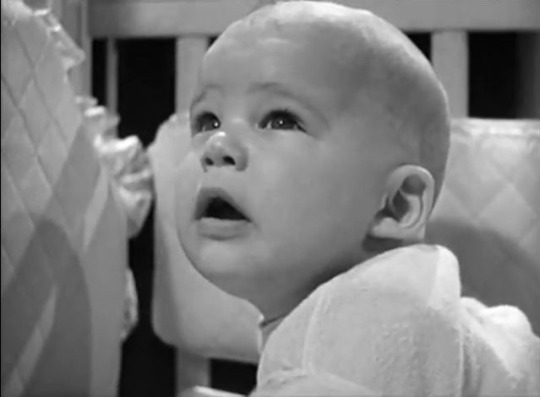
The baby cries all night long. Liz picks him up every time he cries, but as soon as she puts him down, he cries again.
GEORGE: “I know how to make him sleep: ‘Rock-a-bye Baby’. Wait here and I’ll go get a great big rock.” LIZ: “George!!!”
Liz realizes that the baby can’t sleep because she didn’t burp him. After a few pats on the back, Stevie burps.

LIZ: “Isn’t that cute?” GEORGE: “Cute? When he does it it’s cute. When I do it it’s vulgar!”
At the bank the next day, Mr. Atterbury (Hans Conried) calls a sleep-deprived George into his office. He tells George that Mr. Brennan, the man from the Orphans Home, is reluctant to make George trustee because he has no children. Mr. Atterbury comes up with a plan. George must rush home to meet Mr. Brennan and pretend that the neighbor’s baby is his own!
Mr. Brennan (Frank Nelson) arrives at the Cugat’s door just as George comes tearing up the walk to warn Liz of the scheme. George gets Liz into the kitchen to fill her in on the plan, but Liz has already given the baby back to his mother. George tells her to get that baby back!

Liz dashes out the back door, tearing her dress on a branch, and stepping in a puddle. Stevie’s mother asks her husband was was going into her house and Liz realizes that Mr. Brennan is the new neighbor and that Stevie is his son. Liz grabs the baby and rushes back home in shambles, hoping that Mr. Brennan will not notice.

But Mr. Brennan sees a resemblance between the two babies and heads home and get his son to compare the two. Liz rush through the back door to return the baby before he can get there. On the way back Liz tears her dress on a nail, falls in a puddle and gets back just in time to find Mr. Brennan at the door without his son!
MR. BRENNAN: “When I got home and took a good look at him I could see: they don’t look alike at all!”
Later, Liz goes to see Mr. Brennan to tell him how wonderful her favorite husband is and Brennan gives George the job as trustee. He asks one favor, however - that they babysit Little Stevie.
GEORGE: “Not tonight!” LIZ: “No, not tonight. For the whole weekend. Goodnight, George!”
~ END OF EPISODE ~

#My Favorite Husband#Lucille Ball#Richard Denning#Hans Conried#Jean Vander Pyl#Mary Lansing#Ruth Perrott#Frank Nelson#US Air Force#1948#Post Toasties#Kellogg's Corn Flakes#Bran-Nuts#I Love Lucy#Queen ELizabeth#Lucky Strike#John Hiestand
11 notes
·
View notes
Text
“WHEN I AM SILENT A FALL INTO A PLACE WHERE EVERYTHING IS MUSIC” -Rumi Living the notes of music...
SABRINA CARPENTER.....

Sabrina Annlynn Carpenter(born May 11, 1999) is an American singer and actress,After making her acting debut with an appearance in the crime series Law & Order: Special Victims Unit, she starred in a recurring role as the young version of Chloe Goodwin in the television series The Goodwin Games. Carpenter was later cast as Maya Hart in the Disney Channel series Girl Meets World, from 2014 to 2017.Carpenter has starred in the feature films Horns (2013), The Hate U Give (2018), and starred as Jenny in the Disney Channel Original Movie Adventures in Babysitting (2016). As a voice actress, she had a recurring role as Princess Vivian in the Disney Channel animated series Sofia the First from 2013 to 2018. In 2016, she began voicing Melissa Chase on the Disney XD animated series Milo Murphy's Law.Carpenter's debut EP, Can't Blame a Girl for Trying, was released in 2014, and in the same year, she released her debut single of the same name. She released her debut album, Eyes Wide Open in 2015, and has since released another three studio albums: Evolution (2016), Singular: Act I (2018), and her most recent studio album, Singular: Act II, was released on July 19, 2019.
DEMI LOVATO

Demetria Devonne Lovato ( born August 20, 1992) is an American singer, songwriter, actress, and television judge After appearing on the children's television series Barney & Friends (2002–2004), she rose to prominence for her role as Mitchie Torres in the Disney Channel musical television film Camp Rock (2008) and its sequel Camp Rock 2: The Final Jam (2010).Lovato has released six studio albums: Don't Forget (2008), Here We Go Again (2009), Unbroken (2011), Demi (2013), Confident (2015), and Tell Me You Love Me (2017); all of which debuted in the top five of the US Billboard 200. She has earned nine top-20 singles on the US Billboard Hot 100 with "This Is Me", "Here We Go Again", "Send It On", "Skyscraper", "Give Your Heart a Break", "Heart Attack", "Cool for the Summer", "Sorry Not Sorry", and "I Love Me". In total, she has sold over two million albums and 20 million singles in the United States.[7] On television, Lovato has starred as the titular character on Sonny with a Chance (2009–2011); served as a judge and mentor on The X Factor USA in its second and third seasons; and appeared as a recurring character on Glee. Her struggles with personal issues received significant media attention in the 2010s; in response to which she published a book, Staying Strong: 365 Days a Year (2013), and released a YouTube documentary about her life and career, titled Demi Lovato: Simply Complicated (2017).Lovato is a pop, pop rock, and R&B artist. She has received various accolades, including an MTV Video Music Award, 14 Teen Choice Awards, five People's Choice Awards, and two Latin American Music Awards. She also holds one Guinness World Record, and in 2017 Time magazine named her one of the 100 most influential people in the world. Outside the entertainment industry, Lovato is an activist for several social causes.
LAURA MARANO

Laura Marie Marano (born November 29, 1995)is an American actress and singer. She starred in the Disney Channel series Austin & Ally as Ally Dawson. Marano was one of the five original classmates in Are You Smarter than a 5th Grader?. She starred in Without a Trace for three seasons and also Back to You, in both instances playing the daughter of the main characters. Marano starred in the indie film A Sort of Homecoming.[5] Marano also starred in the 2015 Disney Channel Original Movie Bad Hair Day. In 2019 Marano starred in the Netflix original movie The Perfect Date.In 2015, she signed with Big Machine Records and released her debut single "Boombox" on March 11, 2016 and "La La" later that year. On October 5, 2018, Laura Marano released the single "Me" as an independent artist. On January 13, 2016, Marano debuted her own radio talk show on Radio Disney entitled For the Record with Laura Marano. The weekly one-hour show chronicles Marano's journey as she launches her music career, featuring interviews with a guest star in each episode. The show also provides listeners tips on how one can pursue a career in music. The show has featured various guest stars including Nick Jonas, Ariana Grande, Meghan Trainor, OneRepublic, and Troye Sivan. The first episode of the show, which aired January 12, 2016, guest starred her co-stars of Austin & Ally.
SELENA GOMEZ

Selena Marie Gomez (born July 22, 1992) is an American singer, songwriter, actress, and television producer. Born and raised in Texas, Gomez began her career by appearing on the children's television series Barney & Friends (2002–2004). In her teenage years, she received wider recognition for her role as Alex Russo on the Emmy Award-winning Disney Channel television series Wizards of Waverly Place (2007–2012).Alongside her television career, Gomez has starred in the films Another Cinderella Story (2008), Princess Protection Program (2009), Wizards of Waverly Place: The Movie (2009), Ramona and Beezus (2010), Monte Carlo (2011), Spring Breakers (2012), Getaway (2013), The Fundamentals of Caring (2016), The Dead Don't Die (2019), and A Rainy Day in New York (2019). She also voices the character of Mavis in the Hotel Transylvania film franchise (2012–present), and has executed produced the Netflix television series 13 Reasons Why (2017–2020) and Living Undocumented (2019).Gomez released three albums with her former band, Selena Gomez & the Scene: Kiss & Tell (2009), A Year Without Rain (2010), and When the Sun Goes Down (2011), all of which attained gold certifications and reached the top ten in the US. Additionally, Gomez has released three albums as a solo artist: Stars Dance (2013), Revival (2015), and Rare (2020), all of which debuted at number one in the US.[2] She has released eight songs which reached the top ten on the Billboard Hot 100: "Come & Get It", "The Heart Wants What It Wants", "Good for You", "Same Old Love", "Hands to Myself", "We Don't Talk Anymore" with Charlie Puth, "It Ain't Me" with Kygo, and "Lose You to Love Me", the latter being her first US number-one single.In 2017, Billboard reported that Gomez has sold over 7 million albums and 22 million singles worldwide. Gomez has received various accolades and was recognized as the Billboard Woman of the Year in 2017. She has a large following on social media, and was at one point the most-followed individual on Instagram. Gomez's other ventures include a makeup line, a clothing line, a handbag line, a fragrance line, and a production company named July Moonhead Productions. She has worked with various charitable organizations and, at age 17, she became a UNICEF ambassador.
MEGHAN TRAINOR
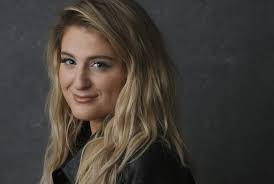
Meghan Elizabeth Trainor (born December 22, 1993) is an American singer-songwriter "All About That Bass", and for being the recipient of the Grammy Award for Best New Artist at the 58th Annual Grammy Awards. Trainor became interested in music from a young age; she wrote, recorded, and produced three independently released albums between 2009 and 2011. After signing a publishing deal with Big Yellow Dog Music, Trainor wrote and helped produce country and pop music for other artists in 2013. She met producer Kevin Kadish in June that year, with whom she wrote "All About That Bass".Trainor rose to fame after signing a contract with Epic Records in 2014 and releasing "All About That Bass", which topped the Billboard Hot 100 chart for eight consecutive weeks and received a diamond certification from the Recording Industry Association of America (RIAA) but drew criticism for its lyrical content. The song was included on Trainor's major-label debut studio album Title (2015), which also includes the top-10 singles "Lips Are Movin" and "Like I'm Gonna Lose You". The album debuted at number one on the US Billboard 200 and was awarded a triple-platinum certification from the RIAA. The lead single of Trainor's follow-up album Thank You (2016) was "No", which reached number three on the Billboard Hot 100. The album debuted at the same position on the US Billboard 200 and was certified platinum by the RIAA. Her third album with Epic, Treat Myself, was released in January 2020.
DUA LIPA

Dua Lipa; born 22 August 1995) is an English singer and songwriter. After working as a model, she signed with Warner Music Group in 2015 and released her self-titled debut album in 2017. The album peaked at number three on the UK Albums Chart, and yielded nine singles, including "Be the One" and "IDGAF", and the UK number-one single "New Rules", which also peaked at number six in the US. In 2018, Lipa won the Brit Awards for British Female Solo Artist and British Breakthrough Act.Released in April 2018, the single "One Kiss", with Calvin Harris, peaked at number one in the UK, and became the longest-running number-one single for a female artist in 2018. It won her the 2019 Brit Award for Song of the Year. In 2019, she was also awarded the Grammy Award for Best New Artist, and "Electricity", a collaboration with Silk City, won her the Grammy Award for Best Dance Recording. The success of the singles helped her self-titled album become one of the most-streamed albums on Spotify and achieve platinum certifications. Her second studio album, Future Nostalgia, was released in March 2020 to critical acclaim. It is her first UK number-one album; its lead single "Don't Start Now" peaked at number two on both the UK Singles Chart and the US Billboard Hot 100.Lipa has received various accolades, including two Grammy Awards, three Brit Awards and two MTV Europe Music Awards. She has also been nominated for three Billboard Music Awards, an American Music Award, and four MTV Video Music Awards.
BILLIE EILISH

Billie Eilish Pirate Baird O'Connell (born December 18, 2001) is an American singer, songwriter, and musician.She first gained attention in 2015 when she uploaded the song "Ocean Eyes" to SoundCloud, which was subsequently released by the Interscope Records subsidiary Darkroom. The song was written and produced by her brother Finneas, with whom she collaborates on music and live shows. Her debut EP, Don't Smile at Me (2017), reached the top 15 in the US, UK, Canada, and Australia.Eilish's debut studio album, When We All Fall Asleep, Where Do We Go? (2019), debuted atop the Billboard 200 and became the best-performing album of 2019 in the US.[2] It also reached No. 1 in the UK. The album contains six Billboard Hot 100 top 40 singles: "When the Party's Over", "Bury a Friend", "Wish You Were Gay", "Xanny", "Everything I Wanted",[a] and "Bad Guy", the last of which became her first No. 1 single in the US. In 2020, she performed the theme song "No Time to Die" for the James Bond film of the same name, which became her first to peak at No. 1 in the UK.Her accolades include five Grammy Awards, two American Music Awards, two Guinness World Records, three MTV Video Music Awards, and one Brit Award. She is the youngest person and second person ever to win the four main Grammy categories – Best New Artist, Record of the Year, Song of the Year and Album of the Year – in the same year. In 2019, Time placed her on their inaugural "Time 100 Next" list. Additionally, Eilish is the 23rd biggest artist of the digital singles era, according to RIAA, selling 37.5 million singles in the US alone.
HAILEE STEINFELD

Hailee Steinfeld (born December 11, 1996) is an American actress, singer, and songwriter. . Her breakthrough role was as Mattie Ross in the drama western film True Grit (2010), for which she was nominated for the Academy Award for Best Supporting Actress. Thereafter, Steinfeld gained further prominence for roles in Ender's Game (2013), Romeo & Juliet (2013), Begin Again (2013), and 3 Days to Kill (2014). She appeared as Emily Junk in the Pitch Perfect film series (2015–2017), and received a Golden Globe Award nomination for Best Actress – Motion Picture Comedy or Musical for her role as Nadine Franklin in The Edge of Seventeen (2016). In 2018, she voiced Gwen Stacy / Spider-Woman in the animated film Spider-Man: Into the Spider-Verse and starred in the action film Bumblebee, contributing to the latter's soundtrack. Steinfeld currently stars as Emily Dickinson in the Apple TV+ series Dickinson.Steinfeld made her breakthrough in music after performing "Flashlight" in Pitch Perfect 2 (2015), signing with Republic Records soon after and releasing her debut single, "Love Myself", followed by her debut extended play Haiz (2015). She has since released a series of singles, including "Starving", a collaboration with both Grey and Zedd, which peaked at number 12 on the Billboard Hot 100 chart in the United States, and "Let Me Go", a collaboration with Alesso, Florida Georgia Line and Watt, which peaked at number 14 on the
CAMILLA CABELLO

Karla Camila Cabello Estrabao ( born March 3, 1997) is a Cuban-American singer and songwriter. She rose to prominence as a member of the girl group Fifth Harmony, formed on The X Factor USA in 2012, signing a joint record deal with Syco Music and Epic Records. While in Fifth Harmony, Cabello began to establish herself as a solo artist with the release of the collaborations "I Know What You Did Last Summer" with Shawn Mendes, and "Bad Things" with Machine Gun Kelly, the latter reaching number four on the US Billboard Hot 100. After leaving the group in late 2016, Cabello released several other collaborations, including "Hey Ma" by Pitbull and J Balvin for The Fate of the Furious soundtrack, and her debut solo single "Crying in the Club".Cabello's debut studio album, Camila (2018), reached number one on the Billboard 200 chart. The Latin music-influenced pop album was well received by critics, and received a Platinum certification by the Recording Industry Association of America (RIAA). Its lead single "Havana" topped the charts in several countries including the US and UK, and follow-up single "Never Be the Same" reached the top 10 in multiple countries. Cabello's 2019 duet with Mendes, "Señorita", became her second single to top the Billboard Hot 100. Her second studio album, Romance (2019), peaked at number three on the Billboard 200 chart and number one in Canada.
ASHLEY TISDALE
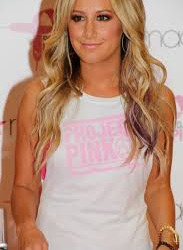
Ashley Michelle Tisdale (born July 2, 1985) is an American actress, singer, and producer. During her childhood, Tisdale was featured in over 100 advertisements and had minor roles in television and theatre. She achieved mainstream success as Maddie Fitzpatrick in the Disney Channel series The Suite Life of Zack & Cody (2005-2008). This success was heightened when she starred as Sharpay Evans in the High School Musical film series (2006-2008). The success of the films led to Tisdale signing with Warner Bros. Records and subsequently releasing her debut studio album Headstrong (2007). The album was a commercial success, earning a gold certification from the Recording Industry Association of America (RIAA). Tisdale played the voice of Candace Flynn in the Disney Channel animated series Phineas & Ferb (2007-2015).Tisdale's second studio album, Guilty Pleasure (2009), was released to less commercial success than its predecessor. Tisdale would part ways with Warner Bros. Records following the release of the album. During this time, she began appearing in more films and returned to television with shows such as Hellcats (2010). Tisdale's production company Blondie Girl Productions, first formed in 2008, signed a multi-year production deal with Relativity Media in 2010; Tisdale would produce shows such as Miss Advised (2012) as part of the deal. Tisdale starred in the High School Musical spin-off film Sharpay's Fabulous Adventure (2011), releasing a soundtrack to promote the film. This marked her final portrayal of the character to date.
TAYLOR SWIFT

Taylor Alison Swift (born December 13, 1989) is an American singer-songwriter.She is best known for her narrative songwriting that often centers around her personal life, which has received widespread critical praise and media coverage. At age 14, Swift became the youngest artist signed by the Sony/ATV Music publishing house and, at age 15, she signed her first record deal. Her 2006 eponymous debut album was the longest-charting album of the 2000s on the Billboard 200. Its third single, "Our Song", made her the youngest person to single-handedly write and perform a number-one song on the Billboard Hot Country Songs chart. Swift's second studio album, Fearless (2008), propelled her to international fame and produced the successful pop crossover singles "Love Story" and "You Belong with Me". It became the best-selling album of 2009 in the U.S., won four Grammy Awards—including Album of the Year—and was certified Diamond by the RIAA.Swift's self-written third album Speak Now (2010) and genre-bending fourth album Red (2012) each sold over one million copies in their first week in the U.S.; the latter yielded her first Billboard Hot 100 number-one single, "We Are Never Ever Getting Back Together". Her fifth album and first all-pop project, 1989 (2014), produced the back-to-back number-one singles "Shake It Off" and "Blank Space" and won three Grammy Awards—including Album of the Year—making Swift the first woman to succeed herself at the top spot on the Hot 100 and the first woman to win Album of the Year twice as lead artist.
ZARA LARSSON

Zara Maria Larsson born 16 December 1997) is a Swedish singer and songwriter. At the age of 10, she achieved national fame in Sweden for winning the 2008 season of the talent show Talang, the Swedish version of British TV's Got Talent. Four years later, in 2012, Larsson signed with the record label TEN Music Group and subsequently released her debut compilation recording, the extended play Introducing, in January 2013. The single "Uncover" topped the music charts in Scandinavia: Sweden, Denmark, and Norway. In February 2013, "Uncover" was certified Platinum by Universal Music Sweden.In July 2013, Introducing was certified 3× Platinum in the country.France. Larsson's debut international album So Good was released on 17 March 2017 and entered at number seven on the UK Albums Chart. It produced eight singles: "Lush Life", "Never Forget You", "Ain't My Fault", "I Would Like", "So Good", "Don't Let Me Be Yours", "Only You", and "Symphony", a collaboration with Clean Bandit. Almost all the album's singles reached the top 15 in the UK.
10 notes
·
View notes
Text
new york’s very own cassandra “cass” oliver was spotted on broadway street in reebok club c 85 vintage shoes . your resemblance to sydney sweeney is unreal . according to tmz , you just had your twenty-first birthday bash . while living in nyc , you’ve been labeled as being naive , but also compassionate . i guess being a pisces explains that . 3 things that would paint a better picture of you would be exposed tan lines , loud laughter , and only ever wearing gold jewelry . ( i slept with one of my co-stars while we were shooting on location, not knowing they had a significant other back home ) & ( cis-female & she / her )

lia takes on a second character TAKE TWO whAT is up you guys , it’s ya girl back at it again with another muse . i randomly got a lot of inspiration for this new girly pop and i feel p good about it ! go ahead and smash that mf like button if you wanna plot ! i can slide into your ims or on discord if that’s more your jam !
S T A T S ↴
– * FULL NAME : cassandra rosemary oliver – NICKNAME(S) : cass ( commonly referred as ), cassie – * AGE : twenty-one – * D.O.B : march 16th – * ZODIAC : pisces – * GENDER : cis-female –* ORIENTATION : bisexual biromantic – * HEIGHT : 5′4″ – * NATIONALITY : american – * BIRTHPLACE : asbury park , new jersey – * OCCUPATION : student + actress – * TRAITS : compassionate, creative, intuitive, gentle, empathetic, fun-loving, naive, whimsical, loyal, subservient, overly emotional, pensive, fearful, overly trusting
B I O G R A P H Y ↴
you’d have to be living under a rock to not know jeremy and elizabeth marie oliver . think brad pitt and angelina jolie , will smith and jada pinkett , or whatever other celebrity IT couple you fancy . jeremy is notoriously known for his acting career that took off in the late 80′s . around the same time , elizabeth marie’s acting / modeling career was taking off across the pond . the iconic duo met through work and quickly fell in love . after their over the top wedding ceremonies ( yes plural . they got married once in jeremy’s hometown in new jersey and then again in elizabeth marie’s hometown in england ). shortly after their holy matrimony , they produced three healthy babies : mason , samuel , and cassandra . there were a few years in between the kiddos , but they were all raised in a tight knit family outside of the limelight in asbury park , new jersey . their parents decided to take a break from working in order to raise their kids . i wish i could say that gave the oliver trio a normal childhood . but it’s kind of hard to go to public school and not draw attention to yourself when your parents are household names . it was hard for cassandra to understand that her parents were super famous and for some reason that meant something to people . if you asked her , there was no reason to get all starstruck over her parents . they were just people after all .
so i guess you could say she had a normal childhood . at least , as normal as one could have with their name and photos constantly plastered all over tabloids . cassandra grew up in a happy and loving environment , which is nice . and with her dad working part time as a professor at his alma mater , juilliard , she and her family bounced back and forth between their coastal home in new jersey and their urban townhouse in new york . and she throughly enjoyed experiencing the best of both worlds . both places felt like home to her and she and her brothers made the best memories together . see , her brothers were her best friends growing up . mason and samuel were five (5) and three (3) years older than her , respectively , and she followed them around everywhere they went . the two boys let her reluctantly at first when mom and dad forced them to but over time it became enjoyable to have her be just another member of their friend group . cassandra was well liked and throughly protected by her brothers and their friends . they shielded her away from all things dangerous : from substances to rude people . this led to a pretty sheltered upbringing . she lived in this little bubble where things were all good all the time .
as she got older , she had to learn to fend for herself a bit more . no longer was she under the watchful gaze of her brothers , for they had rushed into graduating high school early so that they could pursue their own acting careers-- following in line with their infamous parents . having the oliver last name gave them an advantage in the film industry and they ran with that opportunity . meanwhile , cassandra stayed back and took her time . acting was always something she was interested in . there’s no way she could be a member of her household and not dabble in the art at least a little bit . but it wasn’t a top priority to her for a long time . she didn’t want to rely on her family name to get her somewhere in the industry . if she was going to do it , she wanted to do it right . she wanted to earn her place just like anybody else . and if it worked out for her then great ! and if it didn’t , well she prepared a back-up plan . she elected to go to NYU for business instead of studying acting or just bypassing college all together . she figured if all else failed , then she’d start her own company and branch out of the creative arts .
and she took her college career very seriously . she’s studious and hard-working , genuinely enjoying learning new things and having a ‘ normal college experience ’. even though people still look at her funny or talk about her behind her back once they figure out why she looks so gosh darn familiar , she’s come to find that college students are much more chill than the kids that used to bombard her with questions about her famous family on the play ground . most days , cassandra gets by feeling like a completely normal girl . no fame or fortune , just a regular schemgular student trying to get by . and she’d probably gotten away with just melting into the background and never breaking out into the limelight if it wasn’t for one little netflix project she agreed on .
it was just supposed to be another passion project . cassandra had done a few small roles in indie movies at that point . just enough to dip her toes into the movie making world but not enough to drag her away from getting a higher education . but when a script for a new netflix original series was slid in her direction by a family friend turned agent-- well , she just couldn’t put it down ! she loved everything about the show and knew she just had to be a part of it . so she gave up one summer of her life to film OUTER BANKS , not at all thinking that it would blow up the way it did a year later when it premiered . and now news is breaking out that the youngest oliver is finally stepping out into the acting scene , which is warranting a lot of media attention towards her . honestly , she feels pretty good about the project itself . she’s very proud of the show and is incredibly grateful that it’s doing as well as it is . but when it comes to all the notoriety she’s getting because of it , well ... she’s still adjusting to being famous in her own right and not just secondhand through her family . she’s a little overwhelmed . she’s a big girl now that has to navigate through this next chapter of her life without anybody holding her hand or shielding her from the highs and lows of being known . whether or not she thrives in the limelight or crumbles under the pressure is to be determined .
P E R S O N A L I T Y & F U N F A C T S ↴
i think it’s really funny to call her the third franco brother ( yes dave and james have a third brother , his name is tom ). bc like her brothers are essentially mega stars w all the movies they’ve been in at this point and she’s sort of the other sibling that everyone forgets about . y’know until recently lol
she is a giant sweetheart !! just v lovey and kind and empathetic ,, has a warmth to her that makes it feel like it’s summertime all the time
v humble bc she does not consider herself famous what so ever . like being second-hand famous from her family and getting a few extra instagram followers bc of her last name is one thing , but with the success of her current show she’s being put on covers of magazines , being interviewed for teen vogue and stuff like that , getting verified on everything , and gaining hundreds of thousands of followers DAILY . it’s crazy to her
naive in the sense that she’s rlly out here thinking that everyone has a heart as big as hers and has only the best intentions when sadly that might not be the case !! so like ,,,, probs gets taken advantage of and doesn’t even realize it . or messes things up bc she thinks she can just continue living a normal average joe life when in reality her whole life has been far from average ,, the whole world’s got their eye on her and everything she says and does publicly can and will be scrutinized and she is just …. not prepared for that
wants to have a good time and do cool art sh*t !! as long as she’s being creative in some aspect , she’s happy . honestly doesn’t take a lot to make her happy
but also when she gets sad oh boy oh boy does she get sad . pretty much down and out and nothing anyone says or does can make her feel better unfortunately . will just self isolate and you just gotta let her ride it out ://
hobbies include painting , reading , collecting plants , and taking photos
has a second instagram account just for her photography ! @casstookthis lol
lives with her “babies” which are like 10 house plants and all of her books
v family oriented ! goes to visit her parents regularly and talks to her brothers basically daily despite living on two different coasts
acting was always something she knew she wanted to do-- and that may or may not have to do w her parents’ influence and the pressure to follow in their foot steps just like her brothers did
as kids , she and her brothers would work together to put on performances in the living room for their parents . they’d make “short films” and upload them to all 6 of their subscribers on youtube
allergic to cats but wants one so bad ,, has never had a pet in her life actually
the little things amuse her . her sense of humor is really quite simple . hit her w some puns and / or a dad joke and you’ll have her rolling
is learning how to speak mandarin and french
always over-prepared , never underprepared ,, needs to feel like she is capable of handling anything or else she panics
cannot tell a lie to save her life , gets nervous and can’t make eye contact
at any given moment , you can tell what she’s thinking and what she’s feeling just from taking one look at her face . sometimes she tries to mask it because she is an actress after all . but it’s not hard to see through the facade that she puts on if you know her well
hopeless romantic af ! romanticizes everything in life ! loves love in all forms , romantic , platonic , self love , whatever ! looks at the world through rose tinted glasses and heart eyes ! probably falls in love with a person , place , or thing at least 5 times a day !
prefers summer and living near a beach / some body of water over living in the middle of the city . so she’ll often visit back home or go stay with her brothers in LA , not just to be closer to family , but to be more in her element
her family has so many houses simply bc their lives are all over the place ???? like they kept her childhood home in new jersey but they also always had a luxury townhouse in new york plus a summer home in the hamptons and a cottage in england and an apartment in los angeles that her brothers currently reside in . she used to just stay in the townhouse while going to school but she recently bought her own apartment bc she wants to be #independent
might catch her as the lead in a new netflix original movie coming soon *wink wink*
is in love with her best friend east harvey and they’re getting married
WANTED CONNECTIONS PAGE HERE
#wealthyhq:intro#this is short right? i tried to keep it short#but anyways plz love my soft girly pop
5 notes
·
View notes
Photo
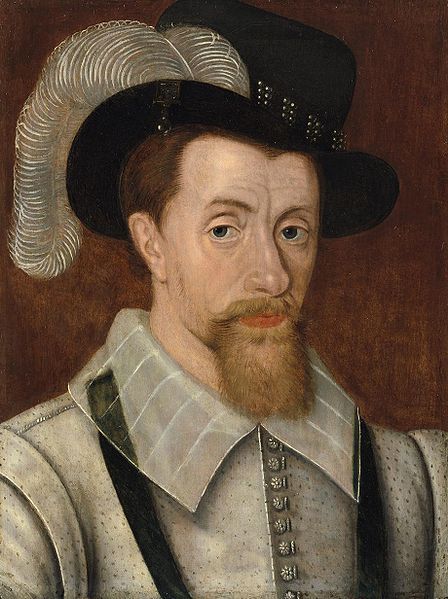
On July 29th 1567 King James VI was crowned at Stirling.
Picking up from last wednesday's post when Mary was forced to abdicate, the powers that be wasted no time in getting the formalities over and crowning the 13 month old son of Lord Darnley. The last time James saw his mother, Mary was in 1567, when he was barely a year old.
Because of his young age a regent was appointed to act as head of state. In fact, during his minority a succession of regents were chosen to rule in his stead.
The first regent was Mary’s half brother, James Stuart, Earl of Moray, Upon the Earl’s death in 1570, Matthew Stewart, Earl of Lennox, who was James grandfather, became the second regent. His regency didn’t last very long, as he died in 1571. The third regent was James’s guardian, John Erskine, the first Earl of Mar whose regency also didn’t last long, he died in 1572. The fourth and last of the regents was the very powerful James Douglas, Earl of Morton.
In spite of his mother’s Catholic faith, James was brought up in the Protestant religion. He was educated by men who had empathy for the Presbyterian church. His marriage to Anne of Denmark (a protestant country) no doubt pleased his Protestant subjects.
James VI is said to have had a terrible childhood, much like his forebears, including his great-grandfather. He had been used and abused by his tutors who were just looking to someone to manipulate and to mold into their little puppet. He was then told that his mother was the most horrible person in the world to the point that he did not know what the truth was anymore. When he was a teenager he became very independent and learned to hide his feelings very well but he also started working for his mother’s release, although some historians dispute this.
He was vocal in his opposition for his mother's trial and subsequent execution and I even read that James was "Desperate for his mother's life". He even destroyed the casket letters in 1584, which although may confirm that they may have had actual proof against Mary, was definitely a move so that his mother can rest in peace after her death and that her memory and legacy will stop being trashed and disgraced because of the letters.
Who knows what really went through his mind. Did he really care about her? Or was he was just looking to release her because he was worried that her execution and her bad reputation would also affect him and his chances to get the throne? There is some reason to believe this last one because Fontenay, the French Ambassador, noted that whenever James talked about his mother, he never “inquired anything of the queen or of her health, or her treatment, her servants, her living, and eating, her recreation, or anything similar.” And how could he when he never knew her and the people who raised him kept telling him ugly stuff about her? To those that were closest to the young King, his mother was the devil incarnate.
Whichever was, Elizabeth I was never going to release Mary Queen of Scots anytime soon and she must have made this very clear because the following year in 1585, when James was 19, he agreed with her decision to keep his mother in prison and even called Elizabeth “Madame Mother”. Imagine how this made Mary feel,her only son, the only hope she had to get free, calling her jailer ‘mother’. It was at this point that she started looking for other means to be released. Ultimately we know they all failed.
I didn't really want this to turn into another post about Mary, but she is so involved in the history of it all she will inevitably turn up time and time again. Anyway more on Young james.......
King James was tutored by George Buchanan and Peter Young. He was a dedicated student and by the age of 8 he was fluent in French, Latin, Greek, and English. This stern upbringing would inspire him to appreciate the arts and sciences and encourage the learning of them all throughout his reign, the King once remarked, that he could speak Latin before he could speak his native Scots. Because of his linguistic capabilities, King James typically did not need a translator when conducting business with other heads of state. King James grew into a powerful king with a powerful pen--he had peace at home and abroad, something few of his ancestors could dream of. His motto was His motto was "Beati Pacifici,"--Blessed are the peacemakers, not to mixed up with -Blessed are the cheesemakers, which of course came from The Life of Brian! ;)
King James' great aspiration to be the first King of both Scotland and England was realized in 1603 upon the death of Queen Elizabeth. When he ascended to the English throne that year he had already been king of Scotland for 36 years. He was now known as King James VI of Scotland & I of England. This came with its own dangers, and of course one of the most famous plots in history, still remembered every November in is known as Guy Fawkes Night.
As a Scotsman ruling over the English, the King endured much racism and slander--especially from the once powerful English Lords and Ladies who he replaced with his Scottish countrymen. Unfortunately, many of today's historians look to the writings of hostile sources such as Sir Anthony Weldon and Francis Osborne as accurate descriptions of the king, nowadays we would say, Haters gonna hate!
The king wrote of his enemies: "They quarrel me (not for any evil or vice in me) but because I was a king, which they thought the highest evil, and because they were ashamed to profess this quarrel they were busy to look narrowly in all my actions, and I warrant you a moat in my eye, yes a false report was matter enough for them to work upon."
The thing with King James is he believed in the doctrine of the divine right of kings and the monarch's duty to reign according to God's law and the public good. This would be handed down to his son Charles I and then to Charles II leading to the loss of many lives during their reigns in The English Civil War,The Bishops Wars and of course The Killing Time.
As a lover of the theatre, King James became patron to the troop of one of his most famous subjects--William Shakespeare, the playwright. Shakespeare's troop came to be known as the King's Men. Shakespeare and the King held a special relationship as they both loved literature. It is said Shakespeare wrote his famous play, "Macbeth" specifically for King James. The "Scottish Play" as it is known in theatrical circles may well be one of Shakespeare's most famous plays, but when you look at the real history of Macbeth, the play was basically The Braveheart of it's day!
Afew other facts surrounding James and his legacy, the US Jamestowne is home to the ruins of the first permanent English speaking settlement in the country, and named in his honour.
To this day the translation of the bible he ordered is known as the Authorized King James Bible. He appointed 54 men to the committee who were not only the best linguists and scholars in the kingdom, but in the world. Much of their work on the King James Bible formed the basis for our linguistic studies of today.
King James had a life filled with accomplishments but he was a man acquainted with grief. He was a sickly man who had physical handicaps in his legs and allegedly a tongue that was too large for his mouth! As a result of his unsteady gait, the king had numerous falls, accidents and injuries. He suffered from crippling arthritis, abdominal colic, gout, inability to sleep, weak/spasmic limbs, nausea, frequent diarrhea, and kidney pain. Some believe that he may have had congenital diseases of the nervous system. Sometimes the pain was so great that the king became delirious.
To add to his ill-health, the James it is thought suffered from depression from the death by his eldest son, Prince Henry in 1612 and his Queen in 1619. James VI was no stranger to pain and sorrow.
I didn't set out to put a long post like this together sometimes they just happen, King James VI & I died on March 27th , 1625 at Theobalds Park in Herts, England. He was 58 years old when he died and had been King of Scotland for most of those years, as well monarch of England for 22, he was buried at Westminster Abbey.
Unlike many Scottish monarchs, King James died in his bed at peace with his subjects and foreign countries. He also passed royal power on, intact, to an adult son which was also quite unusual.
18 notes
·
View notes
Photo
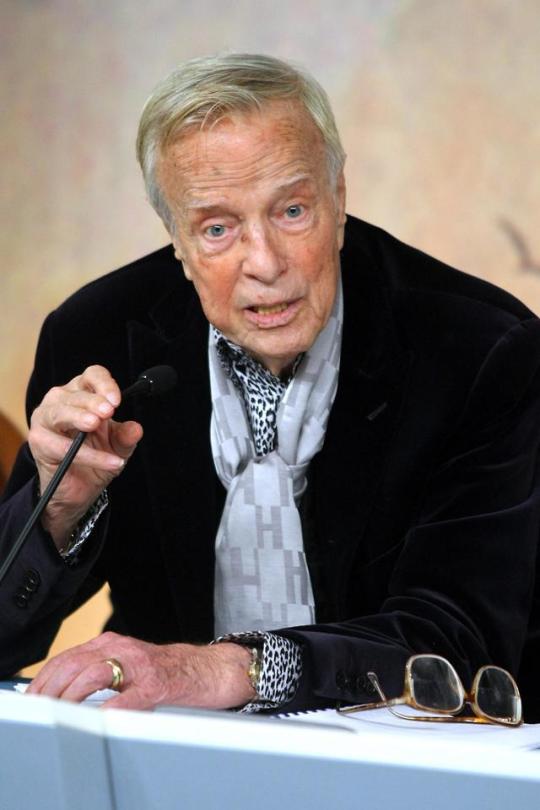
Franco Zeffirelli dies at 96
Franco Zeffirelli, the Italian director and designer who reigned in theater, film and opera as the unrivaled master of grandeur, orchestrating the youthful 1968 movie version of “Romeo and Juliet” and transporting operagoers to Parisian rooftops and the pyramids of Egypt in productions widely regarded as classics, died June 15 at his home in Rome. He was 96.
A son, Luciano, confirmed the death to the Associated Press but did not cite a cause.
Mr. Zeffirelli — a self-proclaimed “flag-bearer of the crusade against boredom, bad taste and stupidity in the theater” — was a defining presence in the arts since the 1950s. In his view, less was not more. “More is fine,” a collaborator recalled Mr. Zeffirelli saying, and as a set designer, he delivered more gilt, more brocade and more grandiosity than many theater patrons expected to find on a single stage.
“A spectacle,” Mr. Zeffirelli once told the New York Times, “is a good investment.”
From his earliest days, he seemed to belong to the opera. Born in Italy to a married woman and her lover, he received neither parent’s surname. His mother dubbed him “Zeffiretti,” an Italian word that means “little breezes” and that arises in Mozart’s opera “Idomeneo,” in the aria “Zeffiretti lusinghieri.” An official mistakenly recorded the name as “Zeffirelli.”
Mr. Zeffirelli grew up mainly in Florence, amid the city’s Renaissance riches, and trained as an artist before being pulled into theater and then film by an early and influential mentor, Luchino Visconti. Mr. Zeffirelli matured into a sought-after director in his own right, staging works in Milan, London and New York City, where he became a mainstay of the Metropolitan Opera.
His first major work as a film director was “The Taming of the Shrew” (1967), a screen adaptation of Shakespeare’s comedy, starring Elizabeth Taylor and Richard Burton. But Mr. Zeffirelli was best known for the Shakespearean adaptation released the next year — “Romeo and Juliet,” starring Leonard Whiting and Olivia Hussey in the title roles.
He reportedly reviewed the work of hundreds of young actors before selecting his two stars, both of whom were still in their teens. With a lush soundtrack by Nino Rota, and with its equally lush visuals, the film won the Academy Award for best cinematography and was a runaway box office success. Film critic Roger Ebert declared it “the most exciting film of Shakespeare ever made.”
It “is the first production of ‘Romeo and Juliet’ I am familiar with in which the romance is taken seriously,” Ebert wrote. “Always before, we have had actors in their 20s or 30s or even older, reciting Shakespeare’s speeches to each other as if it were the words that mattered. They do not, as anyone who has proposed marriage will agree.”
In the opera, an art form already known for its opulence, big voices and bigger personalities, Mr. Zeffirelli permitted himself to be deterred by neither physical nor financial constraints. “Opera audiences demand the spectacular,” he told the Times.
Mr. Zeffirelli had notable artistic relationships with two of the most celebrated sopranos of the 20th century, Maria Callas and Joan Sutherland. But certain Zeffirelli sets seemed to excite the opera world even more than the performers who sang upon them.
One such example was his production of Puccini’s “La Boheme,” an extravaganza set in 19th-century Paris and famous for its exuberant street scene and magical snowfall. After its 1981 premiere at the Met, it was said that the audience lavished on Mr. Zeffirelli a grander ovation than the one reserved for conductor James Levine and the singers who played the opera’s bohemian lovers.
“For the first time,” Mr. Zeffirelli told the Times, “audiences will have a sense of the immensity of Paris, and the smallness of this little group’s place — the actual space of a garret. The acting is now intimate and conversational, which is exactly what Puccini wanted. Since the garret is raised, every whisper and gesture will come across clearly in the theater.”
His production of Verdi’s “Aida,” performed at Milan’s La Scala in 1963 with soprano Leontyne Price and tenor Carlo Bergonzi, featured 600 singers and dancers (including scantily clad belly dancers), 10 horses, towering idols, palm trees and sphinxes littering the expanse of the stage. “I have tried to give the public the best that Cecil B. DeMille could offer,” Mr. Zeffirelli told Time magazine, referring to the Hollywood director’s biblical epics, “but in good taste.”
It was sometimes said that Mr. Zeffirelli was beloved by everyone except music reviewers, some of whom disparaged his style as excessive to the point of taking attention away from the music. Writing in the Times, Bernard Holland panned Mr. Zeffirelli’s set for Puccini’s “Turandot,” set in China, as “acres of white paint and gold leaf topped by the gaudiest of pagodas” and quipped that “if the gods eat dim sum, they certainly do it in a place like this.”
In time, the Metropolitan Opera replaced some of Mr. Zeffirelli’s productions, although the modernistic newcomers — notably Luc Bondy’s dreary “Tosca” in 2009 — did not always prove as popular.
“It’s like somebody decides that the Sistine Chapel is out of fashion,” Mr. Zeffirelli told the Times. “They go there and make something a la Warhol. . . . You don’t like it? O.K., fine, but let’s have it for future generations.”
As for those who had criticized his direction of “Romeo and Juliet” for similar reasons, he retorted, “In all honesty, I don’t believe that millions of young people throughout the world wept over my film ... just because the costumes were splendid.”
Mr. Zeffirelli was born in Florence on Feb. 12, 1923. His father, Ottorino Corsi, was a Florentine businessman, and his mother, Alaide Garosi, was a fashion designer. Her husband was a lawyer, and he died before Mr. Zeffirelli was born.
His mother continued a fraught relationship with Corsi, once attempting to stab him with a hat pin. “The opera? My destiny?” Mr. Zeffirelli observed in a 1986 autobiography, “Zeffirelli.” “I think there is a case to be made.”
After the death of his mother when he was 6, he became the charge of an aunt. He recalled his upbringing in the 1930s in the semi-autobiographical film “Tea With Mussolini” (1999), which he directed and which starred Maggie Smith, Judi Dench and Joan Plowright as English expatriates in Florence who take in a parentless child during the era of fascist rule.
Mr. Zeffirelli attended art school before studying architecture at the University of Florence. His studies were put on hold during World War II, when he fought alongside antifascist partisans. His interests shifted more toward film, particularly after he saw Laurence Olivier star in the 1944 Technicolor film adaptation of Shakespeare’s “Henry V,” which Olivier also directed.
“The lights went down and that glorious film began,” Mr. Zeffirelli recalled in his memoir. “I knew then what I was going to do. Architecture was not for me; it had to be the stage.”
He met Visconti while working in Florence as a stagehand. Visconti, with whom he lived for a period, gave him his push into professional work, hiring him to work as a designer for an Italian stage production of Tennessee Williams’s “A Streetcar Named Desire” in 1949.
Mr. Zeffirelli soon began designing and directing at La Scala and later the Met. He designed, directed and adapted from Shakespeare the libretto for the production of Samuel Barber’s “Antony and Cleopatra” that opened the Met’s new opera house at Lincoln Center in 1966.
Mr. Zeffirelli said he found it invigorating to shift from one art form to another. His theatrical productions starred top-flight actors including Albert Finney and Anna Magnani. On television, he directed “Jesus of Nazareth,” an acclaimed 1977 miniseries with a reported price tag of $18 million and a cast that included Robert Powell as Jesus, Hussey as the Virgin Mary, Olivier as Nicodemus, Anne Bancroft as Mary Magdalene and James Earl Jones as Balthazar.
Mr. Zeffirelli received a best director Oscar nomination for “Romeo and Juliet.” (He lost to Carol Reed for the musical “Oliver!”) He also garnered a nomination for best art direction for his 1982 film adaptation of Verdi’s opera “La Traviata,” starring Teresa Stratas and Plácido Domingo, one of several such operatic film adaptations he made.
His other notable films included “Hamlet” (1990) starring Mel Gibson and Glenn Close. Less acclaimed was “Endless Love” (1981), starring Brooke Shields and Martin Hewitt in a tragic story of teen romance, which Mr. Zeffirelli admitted was “wretched.”
Politically, Mr. Zeffirelli positioned himself on the right, serving as a senator in the political party Forza Italia. “I have found it an irritating irony that those who espouse populist political views often want art to be ‘difficult,’ ” he wrote in his memoir. “Yet I, who favor the Right in our democracy, believe passionately in a broad culture made accessible to as many as possible.”
He described himself as homosexual, preferring not to use the word “gay.” In 2000, he adopted two adult sons, Pippo and Luciano, both former lovers, according to the newspaper the Australian. A complete list of survivors was not immediately available.
Looking back on his life and career, Mr. Zeffirelli once told The Washington Post that he was struck by “how much is risked to become something” — “to make something of his life,” he continued, speaking of himself in the third person. To show that “he’s not a bastard.”
Daily inspiration. Discover more photos at http://justforbooks.tumblr.com
16 notes
·
View notes
Text
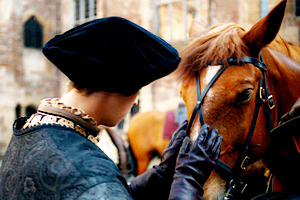
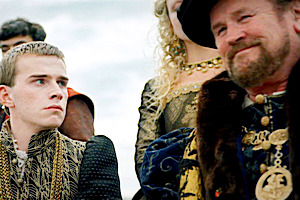
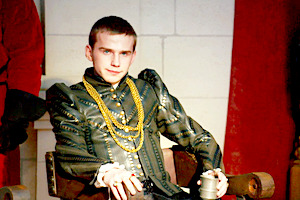

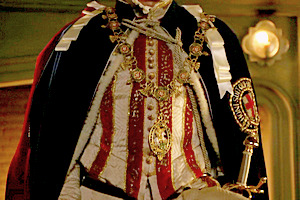
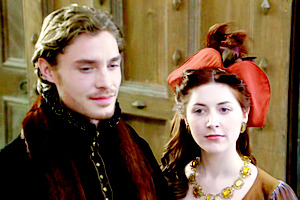
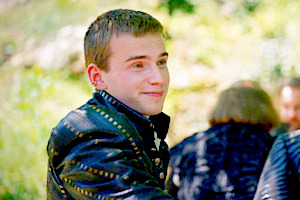
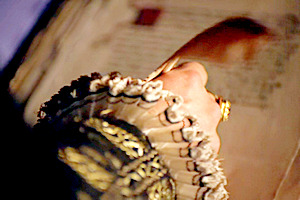
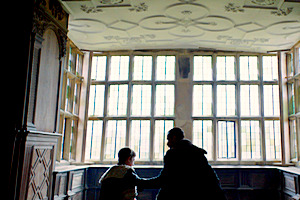
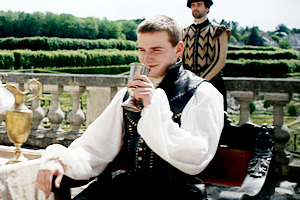
♕ @dailytudors TUDOR WEEK 2024 ♕
Day Three: Best Tudor What If >> 2/2 - HENRY FITZROY LIVES
Henry, Duke of Richmond, the beloved first son of Henry VIII born out of wedlock survives his sickness of 1536. Henry was made a possible heir to his father by the 1536 Successions Act until the birth of a child by his third stepmother Jane Seymour who had recently married his father.
During this time Fitzroy consummates his marriage with his wife Mary the daughter of the Duke of Norfolk. They later had four children, three sons one named after himself and his beloved father, one after St. George and one after his wife's father Thomas, and, a daughter named after his wife and beloved sister Mary, the latter stood as godmother to the younger Mary.
In 1537, his beloved brother, the future Edward VI is born, however Fitzroy's stepmother Jane only survives the birth by a few days. During the official mourning period Fitzroy provides a strong support to his father during his grief and emerges in court as one of the possible leading figures.
Henry then lived through his father marrying another two women, one ending in divorce and the other in execution, the latter being the cousin of his wife, but, during the time of this marriage, Fitzroy was abroad as he was the ambassador to France as he had been educated in the court of Francis I and was close friends with the Dauphin.
Once recalled from France after his father's disastrous fifth marriage he became a prominent figure in court after many leading courtiers left places vacant after being executed by his father (the gaping hole Thomas Cromwell left was widely felt even by his enemies). In this time he starts to take part in the council and education of his brother Edward with his father and appoints a few of his tutors.
In 1543 he was in attendance for his father's last marriage to Catherine Parr who is only six years his senior and was the sister of his close friend Thomas. During this time not only does Catherine bring his youngest sister Elizabeth back into the fold she also further nurtures Henry VIII's relationship with all his children and now grandchildren. Mary Fitzroy, Duchess of Richmond becomes a close confidant and part of the Queen's inner circle and the fourth lady of the court after her step-mother-in-law and sisters-in-law and even outranking the ex-Queen Anne of Cleves now known as the Kings Sister solidifying Henry Fitzroy as a possible heir after his own brother, debatably in front of his sisters.
During 1544 Henry accompanied his father on a campaign which later became known Battle of Boulogne where he learnt warfare and matters of the military.
In 1547 his beloved and larger-than-life father died, leaving his brother Edward VI a young King in his minority. Richmond's careful years of tutelage in the ever-changing court of his father proved to be a well-earned place in the council of his brother while he provided a much-needed balance between his brother's maternal family the Seymours, the rising faction of the protestants and the well-known conservative faction which included his sister Mary. During this time Henry became the leading figure of court and council and the well-accepted heir of his brother as he was the senior male.
Henry having strong links to France secured an advantageous marriage for his brother to Princess Elizabeth of France the daughter of his longtime friend which proved fruitful. It is debated that during the earlier days of his reign after his minority - before Queen Elizabeth had sons - Edward considered bestowing the title of the Duke of York on his brother.
Henry oversaw the marriages of his sons to daughters of the Seymour, Howard and Grey families and the marriage of his much-loved daughter Mary - who is said to be his favourite child - off to a son of John Dudley (Mary then ended up being a sister-in-law in marriage to her Tudor Aunt Elizabeth who had married one of John's other sons Robert).
Henry died strong in his position as the most prominent man at court after his brother, the King, having seen through and guided him in his minority. He was survived by his wife and four children.
#tudorweek2024#perioddramaedit#the tudors#becoming elizabeth#henry fitzroy#mary howard#henry viii#edward vi#my edits
71 notes
·
View notes
Photo

HSHQ TASK FIFTEEN —– ALTERNATE HISTORY well lets go back to the middle of the day that starts it all
history of house stuart, the blessed rulers of scotland
after roman occupation in the 1st to 2nd centuries and the feudal kingdoms of the early middle ages, the gaelic kingdom of scotland ( more commonly known as the kingdom of alba ) was brought together by house alpin in the early 9th century. however, by the 14th century the wars of scottish independence waged by the infiltrating english resulted in the recognition of scottish sovereignty, thus signed recorded in the treaty of berwick ( 1357 ), in which began the longstanding struggle for the scottish throne between houses balliol and bruce. it was at the dusk of king david ii of house bruce’s reign did the dawn of house stuart began. king robert ii inherited the crown from his uncle and formally established house stuart, the descendants of which ruled uncontested for the next three centuries.
the typical ambition to expand was soon brought to the forefront, as the scots began to plot for a stuart monarch upon the english throne. the opportunity had presented itself in the reign of james iv, when the monarch had married the daughter of england��s first tudor king: henry vii. it was the union of james iv and margaret tudor that set the stage for house stuart’s biggest triumph. mary, queen of scots, was the only legitimate heir of james v, and the only living grandchild of james iv. her marriage to her half-cousin, henry stuart, lord darnley, had strengthened the claim of house stuart through the couple’s shared position as the great-grandchildren of king henry vii, of house tudor.
after the tragic murder of her husband, queen mary had been imprisoned by her half-cousin; queen elizabeth of england, for fear that she might usurp the english throne. the english court’s worries were confirmed as queen mary was found guilty of plotting the assassination of queen elizabeth, and was swiftly executed. despite defeating her rival, queen elizabeth had remained childless throughout her reign, ironically passing over the throne to james vi, the heir of queen mary and her husband, henry stuart, the lord darnley. james vi of scotland became james i of great britain, and succeeded in passing the union of the crowns at his ascension to the throne on 1603, after the death of queen elizabeth, marking the end of the tudor era.
house stuart ruled england and scotland uncontested until the 17th century. discontented with the largely catholic stuarts on a protestant throne, james ii and his catholic heirs were deposed after the glorious revolution ( 1688 ) that would place his daughter’s husband, william of orange, on the english throne. james ii’s daughter queen mary ii and her sister anne was raised protestant at the behest of their uncle and the english court, they were not displaced from succession. the scottish were angry at the treatment of the stuart king but were soothed by queen mary ii’s firm place as monarch. this contentment was soon dashed after the death of childless queen mary ii ( of smallpox ) and the subsequent short reign of her sister, queen anne, of whom suffered fifteen stillbirths. the legitimate line of house stuart was considered exhausted, and king george of house hanover inherited the crown of both england and scotland after the act of settlement ( 1701 ) was passed.
james ii’s catholic heir ( brother to queen mary and anne ) was outraged. james francis edward stuart, named prince regent by his father and was granted the authority to act in his name, waged war against the english with the help of the french. this was famously named the jacobite rising of 1745. he had failed, and returned to rome in order to officially gain the support of the papacy. james stuart would continue to prove his claim until his premature death, in which his sons; charles edward stuart and henry benedict, would take the helm. having been studying to become a member of the clergy himself, henry stuart was a favourite of the then cardinal carlo della torre di rezzonico ( the future pope clement xiii ), and had used their close relationship to achieve what his father could not; the formal blessing and recognition of the restoration of the house of stuart.
however, pope clement xiii decreed that the stuarts were only able to claim their native scotland to rule, a compromise that the english reluctantly agreed upon, as they have fully focused their attention upon the seven years’ war against france. even though the english had separated from rome, they were terrified of being crushed under the might of catholic nations. the stuarts came back to their house seat with their heads held high.
on 1760 the ‘breaking of the crowns’ was finalised, fifteen years after the jacobite rising, the elder stuart brother was named sovereign and king charles iii was restored as house stuart sat on the scottish throne once more.
charles iii ( b. 1720 / d. 1781 ) ( ruled: 1760 - 1781 ) grandson to king james vii / i, charles ruled from 1760 to his death in 1781. charles continued the stuart rule with ever important support of the papacy, led by his brother; the cardinal-deacon of santa maria in compitelli. eager to solidify support for his government, king charles married an italian princess at the behest of the pope.
henry i ( b. 1749 / d. 1801 ) ( ruled: 1781 - 1801 ) the eldest son to charles iii, henry’s grandfather chose the name to mark a new era of the scottish crown, for he himself was sure that the stuarts will be restored by the time his grandson came into adulthood. henry became the first duke of rothesay in the stuart restoration era.
henry ii ( b. 1775 / d. 1830 ) ( ruled: 1801 - 1830 ) the third-born and second eldest son of king henry i, henry ii found himself thrust in to the position of crown prince after the untimely death of his elder brother. he was born prince james, but due to his father’s insistence in the new era of stuart monarchs, he chose to continue his father’s choice of the regnal name: henry. the king was instrumental in supporting the scottish enlightenment era, having focused his attention to aiding the development of ancient scottish universities.
james ix ( b. 1804 / d. 1842 ) ( ruled: 1830 - 1842 ) the youngest son after a line of stuart princesses, james ix’s miraculous birth was celebrated throughout the country, and the meaningful name; james, was given to the new crown prince. however, there was much debate to whether or not to include james vii’s uncrowned son james francis edward stuart in the numerical order of king jameses. in the end, the scottish parliament posthumously rewarded james francis edward stuart the regnal name: james viii, making henry ii’s son: james ix.
charles iv ( b. 1827 / d. 1884 ) ( ruled: 1842 - 1884 ) named after the heroic champion of the stuart restoration, charles iv spent the better part of his reign trying to uphold the economic and scientific prosperity brought by his predecessors during the scottish enlightenment. he had paled in comparison, but still contributed heavily to industrial expansion, namely in: cotton, iron, and coal.
henry iii ( b. 1852 / d. 1912 ) ( ruled: 1884 - 1912 ) a notoriously great politician, henry iii led scotland to prosperous relations with the allies that still remain in present day, tightening the relationship between nations of the british isles without resorting to marrying a princess of neighbouring royal families in fear of another attempt in uniting the two crowns. he himself married the daughter of a scottish duke, in what was considered to be a positively patriotic move.
james x ( b. 1879 / d. 1945 ) ( ruled: 1912 - 1945 ) the only heir of henry iii became the king that led scotland through the first and second world wars, he himself serving as a field marshal in the french front. however, the king was wounded in combat towards the end of the war and was immediately removed from the scene, he lived long enough to celebrate the victory of the allies before succumbing to his wounds after christmas of 1945.
james william robert ( b. 1905 / d. 1943 ) ( did not rule ) the crown prince was a captain in the navy at the time of his death during the second world war, leaving behind his wife and two young children in the scottish court. the death of crown prince james immediately resulted in the succession of his eldest son ( who was five at the time ) as the heir apparent to the scottish throne.
william iv ( b. 1938 / d. 2009 ) ( regency: 1945 - 1963 ) - ( ruled: 1963 - 2009 ) five years old when he succeeded his father as heir apparent, william iv was only seven when he ascended as king and monarch. a joint regency between william iv’s mother; princess charlotte ( styled; ‘the princess mother’ ) and his uncle; prince thomas, the duke of ross, was established until william iv was 25 years of age.
mary iii ( b. 1968 ) ( ruled: 2009 - present ) the eldest child of william iv, mary iii was briefly titled merely princess mary before her father passed the succession to the crown act in 1969, replacing the previous male-preference primogeniture to absolute primogeniture. ultimately allowing mary to inherit the crown above any younger siblings, she became the first scottish princess in history placed above a prince in the order of succession. after being named duchess of rothesay and her formal investiture as the crown princess, she famously brokered her own arrangement to the youngest slovene prince.
catherine elizabeth grace ( b. 1993 ) the eldest daughter of mary iii and prince kristijan of slovenia, and current heir apparent of the crown. references, among others: history of scotland, alternate successions of the british crown
3 notes
·
View notes
Photo

[Irregular Webcomic! #4748](https://ift.tt/o8bqpAk)
Wikipedia has a List of Acts of the Parliament of England, 1485–1601, which covers all Parliaments convened during the rule of the House of Tudor. If you scroll down to the heading "1536 (28 Hen. 8)", you will see the list of acts passed during the 28th Parliamentary sitting of Henry VIII's reign. Act c. 14 is "An Act limiting the Prices of Wines", as mentioned by Will in the comic. You can see that passed in the same sitting was "c. 10. An Act extinguishing the Authority of the Bishop of Rome", commonly known as the See of Rome Act 1536. This act made it a crime to in any way support or defend the authority of the bishop of Rome (i.e. the Pope) within the realm of England. It also required all religious and secular officers (I guess of the government), anyone taking holy vows, and anyone starting a university degree to renounce the authority of the Pope and affirm the authority of King Henry VIII and his successors as Supreme Head of the Church, under penalty of high treason. This was part of Henry's ongoing effort to separate the Church of England from the Church of Rome following the dispute over the annulment of his marriage to Catherine of Aragon in 1527. Also passed in the same sitting was "c. 7. An Act for the Establishment of the Succession of the Imperial Crown of this Realm", better known as the Second Succession Act. The prior First Succession Act was passed just three years earlier in 1533. The First Succession Act declared that Mary, the daughter of Henry by his first wife, Catherine of Aragon, was a bastard and thus removed from the line of succession to the Crown. This made Elizabeth, Henry's daughter by his second wife, Anne Boleyn, the new heir presumptive. So, as you can see, Henry really wanted to forget everything about poor Catherine. The Second Succession Act followed this up after Henry got sick of Anne Boleyn (for failing to provide a male child), and dumped her for Jane Seymour. The Second Succession Act duly declared that Elizabeth was also a bastard child and removed her from the line of succession. At the time the Act was passed, Henry had no other children, so he didn't have any legitimate descendant as an heir. If Henry had died at this time (before the birth of his son Edward by Jane Seymour), the throne would have passed to James V of Scotland, a grandson of Henry VII via his mother Margaret Tudor. Being a devout Catholic and opposed to the English Reformation that Henry had kicked off, Henry saw him as unacceptable. So Henry had the Parliament include an additional clause in the Second Succession Act, which gave him the authority to name his own successors, at any time or in his will. Not being one for sticking to his decisions (six wives, anyone?), Henry followed up by asking Parliament to pass the Third Succession Act in 1543. This Act returned both Mary and Elizabeth to the line succession, however it did not restore them as legitimate children of Henry. Furthermore, they were in the succession behind the younger Edward, any future children Henry might still have, and any children and other descendants that Edward might establish. As it turned out, Henry had no further children, with Jane Seymour, any of his future three wives, nor any mistresses (that we know of). So when he died, the throne passed to nine-year-old Edward, who became Edward VI. Edward became terminally ill at the age of 15, childless. The Third Succession Act named his elder half-sister Mary as the next in line, but Mary was a Catholic, and Edward didn't want her on the throne undoing his father's religious reformation. So Edward tried to thwart his father's wishes by naming his own heir, a staunch Protestant: his (approximately) sixteen-year-old cousin-once-removed Lady Jane Grey. This act of seeming generosity towards his cousin unfortunately ended up sealing her fate. She duly assumed the throne on Edward's death less than a month later. However Mary was now a canny 37-year-old woman, and she quickly rallied support as the legitimate heir. Most of Jane's supporters abandoned her and switched sides. After a mere nine days, the Privy Council switched sides, deposed Jane, and declared Mary queen. Mary had Jane's remaining supporters executed, but she spared Jane's life, holding her in the Tower of London. This didn't last long, however, as Jane's father became involved in Wyatt's rebellion, an uprising protesting Mary's intention to marry Prince Phillip of Spain. Mary thus began to see Jane as a threat, and had her executed in the Tower in 1554, at the age of 16 or 17. Mary reigned for five years, until her death in 1558. At that point, the throne passed to Elizabeth, daughter of Henry VIII and Anne Boleyn, who reigned for 44 years as Queen Elizabeth I. And the rest is, as they say, history.
0 notes
Photo
Nonhelema - born into the Chalakatha division, by 1750, she became a Shawnee chieftess. Some called her "The Grenadier" due to her large height.
Woman Cheif - born to the Gros Ventres people, she became one of the Crow's most significant leaders, joining the Council of Chiefs as the third ranking member.
Running Eagle - born into the Piegan tribe of the Blackfeet Nation. After her success in battle, she was suggested by the elders to go on a vision quest, when she returned she said she had a vision of the sun, and it included the sun promising to give her great power in battle, as long as she never slept with a man. The Pitamakan Lake in Glacier National Park, Montana.
Colestah - born into the Yakama Native American tribe, she was described as being a medicine woman, a psychic, and warrior. She was involved in The Battle of Four Lakes, where she rescued Kamiakin and used her skills in traditional tribal medicine to nurse him back to health.
Buffalo Calf Road Woman - a Northern Cheyenne woman who saved her wound brother at The Battle of the Rosebud, and according to oral tradition, she had knocked Custer off his horse at The Battle of the Little Bighorn.
Moving Robe Woman - she was a Hunkpapa Sioux woman, who fought against Custer during The Battle of the Little Bighorn to avenge brother, One Hawk, who was killed.
Elizabeth Wanamaker Peratrovich - she was an important civil rights activist, who on behalf of equality for Alaska Natives, and is credited with advocacy that gained passage of the territory's anti discrimination act of 1945.
Susan La Flesche Picotte - she was a Native American doctor and reformer, and is widely acknowledged as the first Native American to earn a medical degree. She was also known to discourage drinking on reservations, and campaigned to prevent and treat tuberculosis.
Annie Dodge Wauneka - a member of the Navajo Nation, where she worked to improve the health and education, and was awarded the Presidential Medal of Freedom in 1963.
Mary Golda Ross - she was the first known Native American female engineer, she was one of the 40 founding engineers of Skunk Works Project at Lockheed Corporation, as well as design concepts for interplanetary space travel, manned and unmanned earth orbiting, and the earliest studies of orbiting satellites for both defense and civilian purposes.
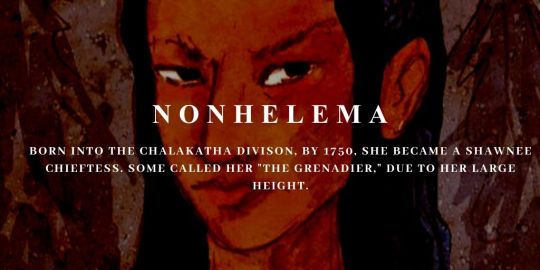
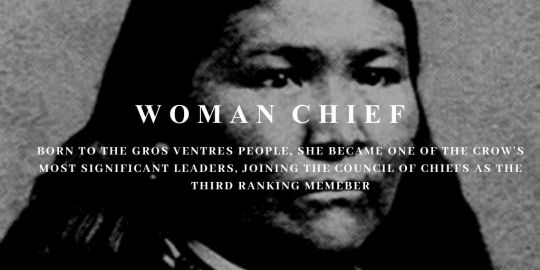
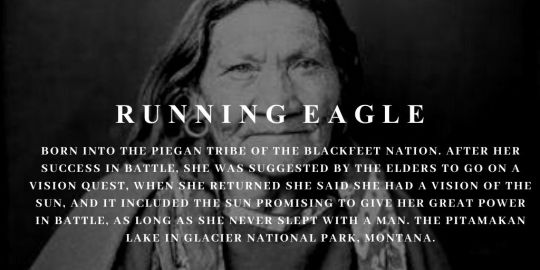


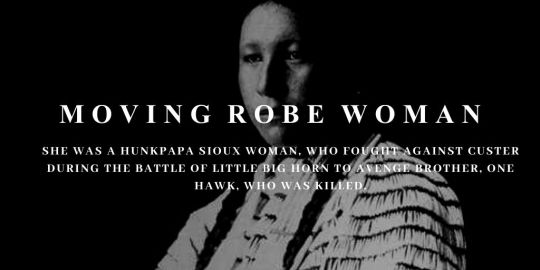



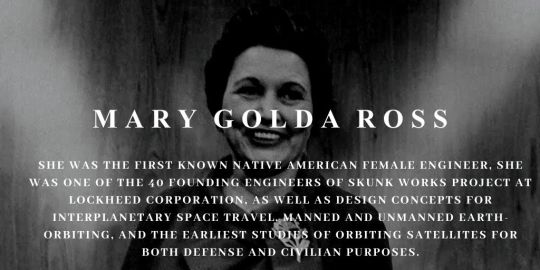
history | powerful women | north america
3K notes
·
View notes
Text
Week 14
13th Amendment to the U.S. Constitution: Abolition of Slavery
Free African Americans Contribution to the War Effort
Black men contributed to the civil war not only as just soldiers but also in other ways. “Not only black soldiers and sailors but also another 200,000 black women and men ultimately traveled with the Union armies over the course of the war and labored in nonmilitary capacities.”(White, Bay, Martin Jr., 281) Free African Americans in the north worked with union soldiers as spies and servants. Black men were road builders, carpenters, wagon drivers livestock tenders, and foragers; women served primarily as cooks, laundresses, teachers, and nurses. Many people had many roles at once like Harriet Tubman who was a scout, spy, teacher, and nurse. Susie King Taylor, a former slave started a school in Sea Islands and served as a teacher, nurse, and laundress for the all-black Thirty-Third U.S. Colored Troops. Blacks were being educated during this time which is very important because white plantation owners wanted to do anything in their power to stop blacks from educating themselves. Another example of black people in action is Mary Elizabeth Bowser who worked undercover as a house servant and spied for the Union in the Confederate White House. Elizabeth Keckley also helped by establishing charitable organizations that assisted with the problem of contraband crowding in the Union capital. It was supported by Henry Highland Garnet, Frederick Douglass, and Sojourner Truth, who also raised food and money for black regiments. “Our work has been to provide shelter, food, clothing, medicines, and nourishment for them..”(White, Bay, Martin Jr., 281) Blacks are very involved in the war effort and making ways to help wherever they can. “From the battlefields and war-torn plantation of the South to the military hospitals and contraband camps in the North, it was often the unpaid work of black women that alleviated the suffering and provided humanitarian aid.” (White, Bay, Martin Jr., 281)
The free blacks also had goals to give over confiscated and abandoned confederate land to former slaves through Special Field Order 15 which was issued by General Sherman on January 16, 1865. Each head of the household could receive up to forty acres of land along the Florida, Georgia, and South Carolina coast.
New York Draft Riot
“Shortly after the Union’s victories at Gettysburg and Vicksburg, Union troops were hastily transferred to New York City to put down a riot.”(White, Bay, Martin Jr., 278) A military draft instituted on March 3, 1863, had proved so unpopular in various parts of the North that it triggered violence. The draft was unpopular because many people did not want to fight a war to end black slavery but also because they saw the draft as unjust. The prosperous could pay 300 to purchase exemption or hire a substitute but the poor and working-class had no choice but to serve. When newspapers published the names of the first draftees, chose by lottery, a mob of white men attacked the Manhattan draft office. “The New York draft riots spread quickly, and for four days roving white mobs, including a large number of criminals and Risih working-class men, turned to ransacking black neighborhoods.”(White, Bay, Martin Jr., 278) They burned the Colored Orphan Asylum to the ground. Thousands of blacks were homeless and destitute. “Dozens were lynched; some were murdered in their homes.”(White, Bay, Martin Jr., 278) The causes were deep-seated. Emancipation may have become a war aim, but for many whites, it was not welcome. Many white soldiers resented being asked to fight and die to free slaves. Many white-working class men and women feared that emancipation would mean a flood of black laborers coming north to take their jobs and undercut their wages and status. The racist language of northern white Democratic politicians and the Democratic press inflamed these fears and tensions.
Importance of the 13th Amendment
“The 13th amendment was the culmination of a war initially undertaken to preserve the union before being transformed into a war to end slavery.” (White, Bay, Martin Jr., 284) Many blacks did not have their rights recognized and for legislation to be passed to end slavery in union territories means that slaves and free people are fully free now. In the past, we read about how blacks had to fight for rights for a long time, even free blacks. It is important to note that freedom does not mean equality. The thirteenth amendment comes about after the Emancipation Proclamation to finally free the slaves because it was a question throughout the war the status of African Americans.
“The House Joint Resolution proposing the 13th amendment to the Constitution, January 31, 1865; Enrolled Acts and Resolutions of Congress, 1789-1999; General Records of the United States Government; Record Group 11; National Archives.”

13th Amendment to the U.S. Constitution: Abolition of Slavery
“The House Joint Resolution proposing the 13th amendment to the Constitution, January 31, 1865; Enrolled Acts and Resolutions of Congress, 1789-1999; General Records of the United States Government; Record Group 11; National Archives.”
The Fall of Black Reconstruction
Black Reconstruction, which took place from 1866 to 1877, was a “ revolutionary political period…, when, for the first time ever, black men actively participated in the mainstream politics of the reconstructed southern states and in turn, transformed the nation’s political life” (White, Bay, Martin Jr., G-1). The Reconstruction era saw the passing of civil rights acts, amendments, and reconstruction acts. The passing of such legislation, along with the reauthorization of the Freedmen’s Bureau, sought to protect the civil rights of the freedpeople. The Civil Rights Act of 1866, which was then affirmed by the Fourteenth Amendment, defined U.S citizenship for the first time. It also established that all citizens were equally protected by the law. However, the voting rights of black men were not protected and ensured by either. The Reconstruction Act of 1867 dissolved all state governments, with the exception of Tennessee. In order for the state to reenter the Union, the state was required to create a new state constitution that guaranteed black voting rights and ratified the Fourteenth Amendment. As the South began reconstructing states, Black Reconstruction saw the rise of black involvement in politics. Over 2,000 blacks served as officeholders, fourteen served in the House of Representatives, and two served in the Senate. To ensure black men’s right to vote, which was viewed by African Americans as the most important civil right, Congress ratified the Fifteenth Amendment in 1870. This amendment stated that, “the right of citizens of the United States to vote shall not be denied or abridged by the United States or by any State on account of race, color, or previous condition of servitude” (White, Bay, Martin Jr., 318). However, this period of Black Reconstruction, and Reconstruction in general, did not last very long.
White Southerners were infuriated with the involvement of blacks in politics. This discontent turned into a initiation of a counterrevolution to restore white power and superiority. They were in search of “redemption.” By the late 1860s, southern whites began to push blacks out of office. The greatest element they used to achieve their “redemption” was intimidation. They did this through the use of violence. White Supremacist groups began to form in the South that terrorized black communities. The most notable being the Ku Klux Klan (KKK), which was founded in 1865 in Tennessee. These white supremacist groups would often target successful black businesses or people. However, many facets of black life were targeted and destroyed such as schools, churches, businesses, buildings, homes, livestock, and more. Included in that list were black people. They were “beaten, raped, murdered, and lynched” (White, Bay, Martin Jr., 319). Despite the attempt to put down this violence, through the Force Acts in 1870 and 1871, the lawlessness and brutality continued. The Colfax Massacre is the greatest example of the amount of violence that black people faced. This massacre, which took place on Easter Sunday in 1873, culminated with 280 black people killed. Through all of this endless violence, the Republican Party accepted the return of ex-Confederates into the government. Northern Republican support waned and they gave in to the uprising of white southerners. Black people even began to be blamed for the violence they were facing. This indicated that the government had abandoned the freedpeople. The Black Revolution came to an end, and once again, black people were left on their own to face white violence and brutality.

Currier & Ives. The first colored senator and representatives - in the 41st and 42nd Congress of the United States. New York: Published by Currier & Ives. Photograph. Retrieved from the Library of Congress, <www.loc.gov/item/98501907/>.
0 notes
Text

@justicescreaming said: Important hc question: Did Cate want kids with Henry and if so, was she worried about what might happen to her step children if she had another son? Or even a daughter?

oh man okay this is....complicated. catherine wanted kids. badly. she had so much love to give and was often devastated by the fact that she was never able to have any. plus, given many factors including lack of birth control and pressure to produce an heir, i find it highly unlikely catherine didn’t suffer from miscarriages. she often wondered if god was trying to tell her she wasn’t meant to be a mother. but oh god, she wanted to be a mom so badly. she loved all of her stepchildren ( though elizabeth and edward were the only two she could REALLY feel like a mother to. even margaret neville was only 13 years younger than her, so she was really more like a big sister ), but it wasn’t the same as being someone’s mother.
were it any other man, catherine would have been overjoyed to have children with him. but henry’s history....complicated things a bit. she knew that failed and/or ‘unideal’ pregnancies were a cause of both catherine of aragon and anne boleyns’ downfalls. she knew that she would love a daughter just as fiercely as a son, even though her husband wouldn’t. falling pregnant would be a very large risk for catherine, and ultimately, she would constantly fear for her child if henry was the father.
as for the fate of mary and elizabeth, i don’t think she would have been all that worried after the third succession act passed. if anything, birthing a son could have protected them since, with a ‘spare’ to edward’s ‘heir’, henry’s fear of a succession crisis would be over ( paranoia notwithstanding so...who knows ). by the time any child of catherines would have been born, she would have known that mary and elizabeth were restored to the line of succession. so even if she had a daughter, she would be recognized behind her sisters.
TL;DR: yes. but like a....‘i’d worry for my child my whole life even more than if their dad was someone else’ kind of yes.
#KP ✩ answers | remember that i was a writer#KP ✩ headcanon | should i play the coward#KP ✩ verse: historical | im fixed as one of six#ty for this <3
0 notes
Text
THE PORTRAIT ARTIST
August 6, 1948
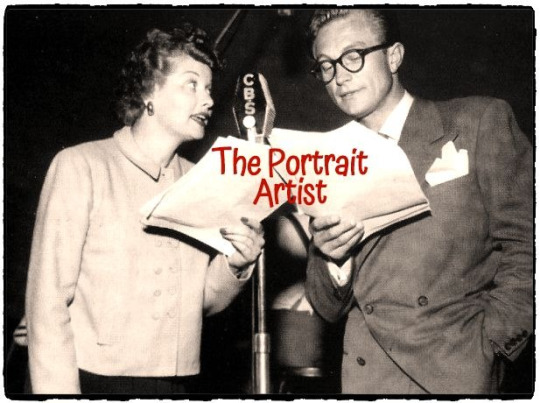
"The Portrait Artist” aka “The Portrait Painter” aka “The Portrait” is episode #3 of the radio program MY FAVORITE HUSBAND broadcast on August 6, 1948 on the CBS Radio Network.
Synopsis ~ Liz is having her portrait painted by a handsome but gruff artist. George gets jealous and fakes illness, and he is attended to by a sexy young nurse - causing the green-eyed monster to rear between both Cugats!
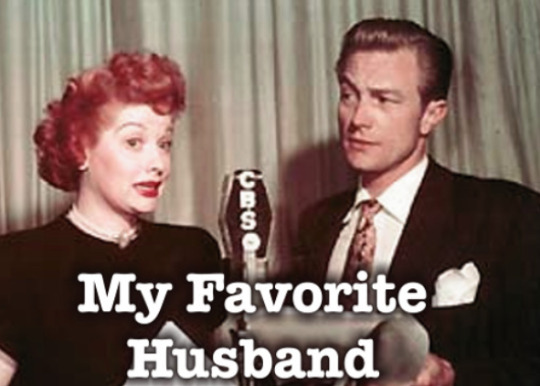
MAIN CAST
Lucille Ball (Liz Cugat) was born on August 6, 1911 in Jamestown, New York. She began her screen career in 1933 and was known in Hollywood as ‘Queen of the B’s’ due to her many appearances in ‘B’ movies. With Richard Denning, she starred in a radio program titled “My Favorite Husband” which eventually led to the creation of “I Love Lucy,” a television situation comedy in which she co-starred with her real-life husband, Latin bandleader Desi Arnaz. The program was phenomenally successful, allowing the couple to purchase what was once RKO Studios, re-naming it Desilu. When the show ended in 1960 (in an hour-long format known as “The Lucy-Desi Comedy Hour”) so did Lucy and Desi’s marriage. In 1962, hoping to keep Desilu financially solvent, Lucy returned to the sitcom format with “The Lucy Show,” which lasted six seasons. She followed that with a similar sitcom “Here’s Lucy” co-starring with her real-life children, Lucie and Desi Jr., as well as Gale Gordon, who had joined the cast of “The Lucy Show” during season two. Before her death in 1989, Lucy made one more attempt at a sitcom with “Life With Lucy,” also with Gordon.
Richard Denning (George Cugat) was born as Louis Albert Heindrich Denninger Jr., in Poughkeepsie, New York. When he was 18 months old, his family moved to Los Angeles. Plans called for him to take over his father's garment manufacturing business, but he developed an interest in acting. Denning enlisted in the US Navy during World War II. He is best known for his roles in various science fiction and horror films of the 1950s. Although he teamed with Lucille Ball on radio in “My Favorite Husband,” the two never acted together on screen. While “I Love Lucy” was on the air, he was seen on another CBS TV series, “Mr. & Mrs. North.” From 1968 to 1980 he played the Governor on “Hawaii 5-0″, his final role. He died in 1998 at age 84.
Ruth Perrott (Katie, the Maid) was also later seen on “I Love Lucy.” She first played Mrs. Pomerantz, a member of the surprise investigating committee for the Society Matrons League in “Pioneer Women” (ILL S1;E25), was one of the member of the Wednesday Afternoon Fine Arts League in “Lucy and Ethel Buy the Same Dress” (ILL S3;E3), and also played a nurse when “Lucy Goes to the Hospital” (ILL S2;E16). She died in 1996 at the age of 96.
GUEST CAST

John Hiestand (Cory Cartwright) served as the announcer for the radio show “Let George Do It” from 1946 to 1950. In 1955 he did an episode of “Our Miss Brooks” opposite Gale Gordon in which he once again had the surname Cartwright.
The role of Cory Cartwright was originated by Hal March but Hiestand very quickly replaced him. March did, however, stay with the show and appears from time time as various characters.
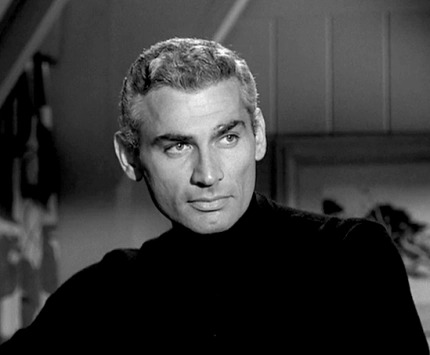
Jeff Chandler (Damon Welch) was known for his prematurely gray hair and striking good looks as a young man. On radio, he was on “Our Miss Brooks” as Mr. Boynton with Eve Arden. When the series moved to television in 1952, Chandler was replaced by Robert Rockwell. Chandler died at age 42 from blood poisoning after an operation.
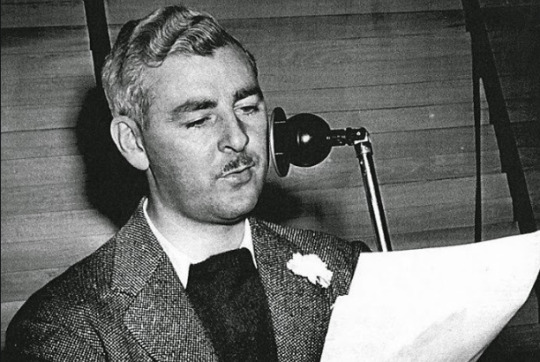
William Johnstone (Doctor) is best known for his voice work as the title character on “The Shadow” from 1938 to 1943, replacing Lucille Ball’s friend Orson Welles. He played John Jacob Astor in the 1953 film Titanic.

Mary Shipp (Nurse Mary Ann McCarthy) was a radio and TV actress and the second wife of CBS Executive Harry Ackerman. Shipp played a recurring character on CBS’s “My Friend Irma” (1954-55) which featured Gale Gordon’s mother Gloria and Hal March, who was the first actor to play Cory Cartwright.

“My Favorite Husband” was based on the novels Mr. and Mrs. Cugat, the Record of a Happy Marriage (1940) and Outside Eden (1945) by Isabel Scott Rorick, which had previously been adapted into the film Are Husbands Necessary? (1942). “My Favorite Husband” was first broadcast as a one-time special on July 5, 1948. Lucille Ball and Lee Bowman played the characters of Liz and George Cugat, and a positive response to this broadcast convinced CBS to launch “My Favorite Husband” as a series on July 23, 1948. Bowman was not available Richard Denning was cast as George. On January 7, 1949, confusion with bandleader Xavier Cugat prompted a name change to Cooper. On this same episode Jell-O became its sponsor. A total of 124 episodes of the program aired from July 23, 1948 through March 31, 1951. After about ten episodes had been written, writers Fox and Davenport departed and three new writers took over – Bob Carroll, Jr., Madelyn Pugh, and head writer/producer Jess Oppenheimer. In March 1949 Gale Gordon took over the existing role of George’s boss, Rudolph Atterbury, and Bea Benaderet was added as his wife, Iris. CBS brought “My Favorite Husband” to television in 1953, starring Joan Caulfield and Barry Nelson as Liz and George Cooper. The television version ran two-and-a-half seasons, from September 1953 through December 1955, running concurrently with “I Love Lucy.” It was produced live at CBS Television City for most of its run, until switching to film for a truncated third season filmed (ironically) at Desilu and recasting Liz Cooper with Vanessa Brown.
This episode aired on Lucille Ball’s 37th birthday, August 6, 1948.
At this point in the series, George and Liz are still named Cugat. Their surname will be changed to Cooper in 1949 to avoid confusion with a famous Latin bandleader. No, not Desi Arnaz - Xavier Cugat! Also, the show had yet to introduce Iris and Rudolph Atterbury, the secondary characters, similar to Fred and Ethel on “I Love Lucy.” The character of Cory Cartwright, a handsome bachelor friend of the couple, will shortly be phased out. He was initially played by Hal March, but here played by John Hiestand.

Marital jealousy and painting were also the subjects of “My Favorite Husband” the CBS television show on November 29, 1955.
THE EPISODE
Announcer Bob LeMond sets up the premise of the series:
Ten years ago the town’s most eligible bachelor, George Cugat, married socially prominent Elizabeth Elliott. The lavish wedding kept the society columns all over the country in copy for weeks. The New Yorker said:
“The bride and groom were dressed with the nth degree of smartness. The best man was a polo pony.”
The Hearst Papers said:
“The bride and groom were dressed handsomely and attracted comments from guest Douglas MacArthur.”
And The Reader’s Digest said:
“The bride and groom were dressed.”

The joke lies in the brevity of the Digest’s comments. The Reader’s Digest was known for their publication of abridged novels, short stories, and articles that could be read in one sitting. Ricky was seen reading the Digest in “Lucy Writes a Novel” in 1954. That same year, a biography of Ball by Eleanor Harris was included in the Digest - condensed, naturally. Ball appeared on the covers in 1990 and 2003.
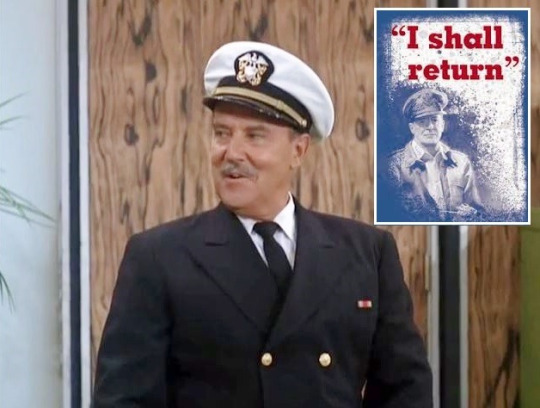
Douglas MacArthur (1880-1964) was a five-star general and Chief of Staff of the United States Army during the 1930s. He played a prominent role in the Pacific theater during World War II. At the time of broadcast, he was running for President of the United States, but was defeated in the primaries by Dewey, who was narrowly defeated in the election by Harry S. Truman. In “Lucy and the Submarine” (1966) Mr. Mooney(Gale Gordon) tells Lucy he’s going on a two-week training, but warns her (in his best deep-voiced, measure tones) that “I shall return!” These were the immortal words spoken by MacArthur when he escaped the Philippines after being surrounded by the Japanese in March 1942.
It is morning at the Cugat home and while George is having breakfast, Katie the maid is trying to help Liz fit into a tight-fitting and slinky evening gown in preparation for having her portrait painted. Katie suggests wearing a different dress for the portrait, but Liz is worried that they might move to Boston one day, and she doesn’t want her portrait banned!

"Banned in Boston" was a phrase employed from the late 19th century through the mid-20th century, to describe a literary work, song, motion picture, or play which had been prohibited from distribution or exhibition in Boston, Massachusetts. During this period, Boston officials had wide authority to ban works featuring "objectionable" content, and often banned works with sexual content or foul language. In 1944, just a few years before this broadcast, Boston banned the book Forever Amber by Kathleen Winsor, which was referred to on “I Love Lucy” as Forever Ember.
Liz goes down to breakfast in her slinky evening gown and tells George that she is having her portrait painted by noted artist Damon Welch.
LIZ: “They say he’s very big and strong and muscular like, uh...who’s that rugged tall actor in the movies? The one with the big arms and broad shoulders?” GEORGE: “Marjorie Main.” LIZ: “No, Victor Mature.”
Marjorie Main (1890-1975) was a character actress who just a few months before this broadcast earned an Oscar nomination for The Egg and I. In 1954 she was a supporting player in Lucy and Desi’s The Long, Long Trailer (1953).

Victor Mature (1913-99) was a stage, film, and television actor who starred in several movies during the 1950s, and was known for his dark hair and smile. Mature and Lucille Ball acted together in Seven Days Leave (1942) and Easy Living (1949).
Bachelor Cory Cartwright (John Hiestand) visits the Cugats with exciting news about his date last night:
CORY: “She had a smile like Lana Turner, a voice like Dinah Shore, she kissed like Paulette Goddard.” LIZ: “Do you date her or buy tickets to her?”

Lana Turner (1921-55) achieved fame as both a pin-up model and a film actress. In the mid-1940s, she was one of the highest-paid actresses in Hollywood and one of MGM) biggest stars. In 1943, she did a cameo in Lucille Ball’s Du Barry Was a Lady. Turner was mentioned in three episodes of “I Love Lucy.”
Dinah Shore (1916-94) was a singer, actress and television personality, as well as a top-charting female vocalist of the 1940s. She achieved even greater success on television, mainly as hostess of a series of variety and talk programs, although she guest starred on “Here’s Lucy” in 1971. Ball made numerous appearances on Shore’s talk shows as well.
Paulette Goddard (1910-90) was major star of Paramount Pictures in the 1940s. She was nominated for an Academy Award for Best Supporting Actress for her performance in So Proudly We Hail! (1943). She did three films with Lucille Ball between 1933 and 1934: Roman Scandals, The Bowery, and The Kid.
George comes home from work and asks Liz about progress on the portrait. Liz was impressed by Welch’s world experience. George feels inadequate. He makes her tell him how much she loves him.
LIZ: “Hold me tighter. Make believe I’m a tube of toothpaste and pop my cap off!”
Dejected that Liz wants him to take up painting like Damon Welch, George goes to bed without his supper.
The second act begins with George deciding to stay home, pretending to be sick in order to keep an eye on Liz and Welch. Katie admits Damon for their sitting. Welch doesn’t believe George is sick.
DAMON: “You should get out-of-doors; do some exercises. Run the mile, do some chin-ups, push-ups, chop some wood, mow the lawn, pull some weights...” LIZ: “Tote that barge, lift that bale!”

Liz chimes in with lyrics from the song “Old Man River” by Oscar Hammerstein II and Jerome Kern, written for the 1927 musical Show Boat. A revival of the musical ran on Broadway in 1946. There was a radio adaptation in 1944. In “Never Do Business With Friends” (1953), Lucy Ricardo analogizes her housework without an electric washing machine to that of the slaves who sing “Old Man River”:
LUCY: “Carrying this heavy basket - up and down, up and down. My muscles straining, body all aching and racked with pain. Fold those shirts, lift those sheets.” RICKY: “Now, look, Old Man River, will you dry up?”
The doctor arrives and examines George, finding nothing whatever the matter with him. His diagnosis is extreme jealousy-itis. He summons his new nurse, Mary Ann McCarthy (Mary Shipp), whose beauty stops George in his tracks.
Downstairs, Liz is still being painted by Damon, but not nearly fast enough for her liking. She complains that he still hasn’t painted her hair! She doesn’t like seeing herself bald!
LIZ: “I look like my mother was frightened by Guy Kibbee!” MONTY: “I’ll paint in your hair when I see fit, and not a second sooner. Until that time you’ll remain an egg-head and like it!”

Guy Kibbee (1882-1956) was a stage and film actor. In the 1935 film Mary Jane's Pa, Kibbee prepares a breakfast dish which consists of a hole cut out of the center of a slice of bread, and an egg cracked into it, all of which is fried in a skillet. It became known as Guy Kibbee Eggs but is also known as eggs in a basket. Liz is no doubt comparing her bald head on the canvas with the eggs. I didn’t hurt the comparison that Kibbee was also bald! Kibbee appeared with Lucille Ball in Don’t Tell The Wife (1937) and Joy of Living (1938).
George hears Damon and Liz laughing and comes downstairs to confront them but Damon sends him back upstairs. Liz wonders if George is jealous just as George is heard laughing upstairs with Nurse McCarthy. Liz goes upstairs to confront her husband! George says he’s had a relapse!
GEORGE: “I accidentally plugged my electric heating pad into the radio and H.V. Kaltenborn got into bed with me!”

Hans von Kaltenborn (1878-1965) was a radio commentator who was heard regularly on the radio for over 30 years, beginning in 1928. He was known for his highly precise diction, his ability to ad-lib, and his knowledge of world affairs. In 1948, Kaltenborn played himself in The Babe Ruth Story which co-starred William Frawley (Fred Mertz).
George, still suspicious of Liz and Damon, goes downstairs to discover that Liz has dismissed the painter so George wouldn’t be sick and Miss McCarthy would go.
After a message from the announcer about participation in community projects (a post-war endeavor), George and Liz engage in some bedtime repartee before they kiss and say goodnight. End of episode!
#My Favorite Husband#Lucille Ball#Richard Denning#Radio#1948#The Portrait Artist#Ruth Perrott#John Hiestand#H.V. Kalenborn#Guy Kibbee#Old Man River#Paulette Goddard#Dinah Shore#Lana Turner#Marjorie Main#Victor Mature#Banned in Boston#Forever Amber#Douglas MacArthur#Reader's Digest#Bob LeMond#Jeff Chandler#Mary Shipp#William Johnstone
2 notes
·
View notes